Menu

Chaga mushrooms are celebrated for their antioxidant-rich properties and potential to support the immune system and gut health, making them a popular choice in teas and supplements.
Revered in traditional medicine, this functional mushroom offers promising benefits for health maintenance—but like any natural supplement, it’s not without its precautions.
Could ingesting too much chaga mushroom strain your kidneys? Might it lower blood sugar levels to an unsafe degree for certain individuals? Could chaga interact with medications?
For those considering consuming chaga, understanding both its benefits and potential side effects is essential. In this guide, we delve into everything you need to know to safely and effectively incorporate chaga into your wellness routine.
In folk medicine, chaga mushrooms (Inonotus obliquus) are renowned as functional mushrooms due to their unique bioactive compounds and potential health benefits. [1]
Growing on birch trees in cold climates like Russia, Canada, and Scandinavia, Chaga absorbs nutrients from its host tree, resulting in high levels of polyphenols, triterpenes, melanin, and beta-glucans.
Chaga contains bioactive compounds like betulinic acid, betulin, inotodiol, ergosterol peroxides, and caffeic acid, which may offer antibacterial, antiviral, antioxidant, and immune-modulating benefits.
Its high melanin content supports antioxidant activity that may support healthy skin cells. While beta-glucans, a valuable dietary fiber, play a key role in boosting immunity and overall health.
Traditionally consumed as tea or broth, Chaga has long been used to promote wellness, support energy, and maintain a healthy immune response.
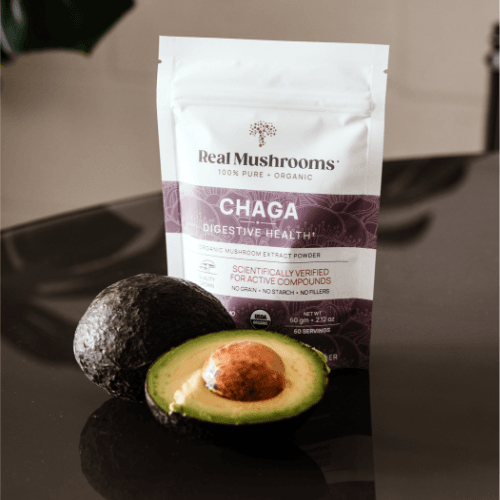
Wild-harvested Chaga is dried and either ground into Chaga mushroom powder or subjected to hot water extraction to isolate beneficial polysaccharides.
Hot water extraction is particularly important as it breaks down the tough chitin cell walls [3] of the mushroom, making its nutrients bioavailable to the human body.
Chaga supplements made from the fruiting body contain higher concentrations of active compounds, such as beta-glucans, providing a more potent option for those taking Chaga as part of their wellness routine.
Chaga provides antioxidants that may help support the body’s natural defenses and overall well-being. Excessive consumption or pre-existing health conditions can influence its safety, making balance and moderation essential to maximizing its potential benefits.

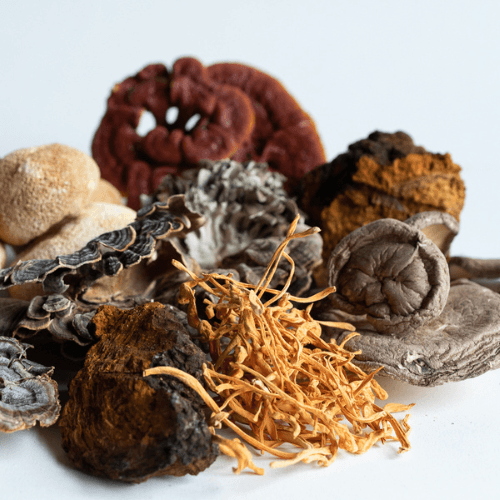
Chaga mushrooms are widely celebrated for their potential health benefits, often enjoyed as an herbal tea or in supplement form. However, consuming Chaga mushrooms requires caution, as their nutrient profile, including high concentrations of beneficial compounds, can interact with certain health conditions or medications.
Understanding these interactions is crucial to ensure Chaga is consumed safely, particularly for individuals managing chronic health issues.
Chaga’s high oxalate content is a primary concern for individuals with kidney conditions. Excessive oxalates are compounds that can bind to minerals and potentially increase kidney strain [2]. Moderation is key when incorporating a Chaga mushroom tincture or supplement into your routine if kidney health is a concern.
Chaga’s polysaccharides may help maintain normal blood sugar levels.
Research shows that Chaga’s hypoglycemic effects [4] may enhance the action of glucose-lowering medications [5], potentially increasing the risk of hypoglycemia.
It is important for those who want to keep their blood sugar balanced to consult a healthcare provider before using Chaga powder supplements to avoid adverse blood sugar fluctuations.
Tea Tips: Learn about chaga tea and why many cultures have historically made it.
Chaga is believed to have anticoagulant (blood-thinning) properties, which can increase the risk of bleeding in those with blood disorders or individuals taking blood-thinning medications.
Chaga’s effects on platelet aggregation may heighten the likelihood of bruising or bleeding complications, especially during surgery or recovery. People with such conditions should use Chaga cautiously and under the supervision of a healthcare provider.
For individuals managing chronic conditions or taking multiple medications, the potential interactions of Chaga powder should not be overlooked. Taking these precautions helps you safely benefit from Chaga’s potential as a functional mushroom and superfood.
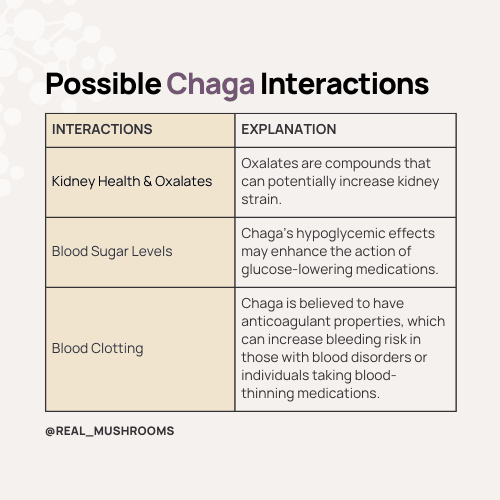
While Chaga mushrooms can offer potential benefits, certain groups need to approach their use with caution. These risks often stem from the effect of Chaga’s nutrient composition and interactions with medications or existing conditions.
If you fall into any of these categories or have chronic conditions, consulting a healthcare provider before using Chaga is strongly recommended. Professionally guided advice can help reduce risks while ensuring its use is aligned with your health needs.
Is Chaga Safe During Pregnancy? As bioactive compounds in Chaga may transfer to breastmilk, their potential effects on infants remain unknown. Consult a healthcare professional before using Chaga to ensure it is safe and appropriate for your situation.
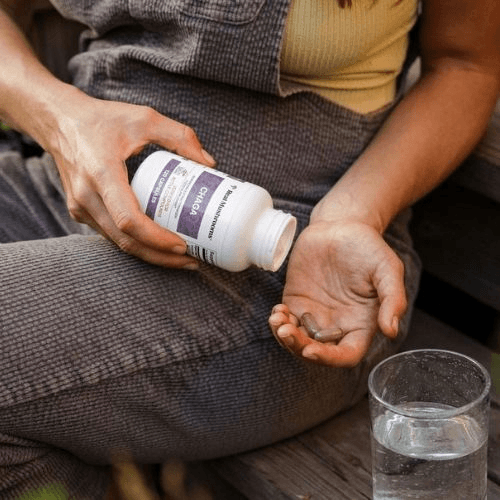
Incorporating Chaga into your wellness routine raises important questions—how much should you take, what’s the best form, and how do you know if it’s safe?
As a functional mushroom, it offers unique benefits. But opting for organic, fruiting-body-based Chaga supplements ensures you’re getting the most active compounds without unnecessary fillers, grains, or starches. This quality and potency set the foundation for balanced and effective use.
Here are some tips to help you get started:
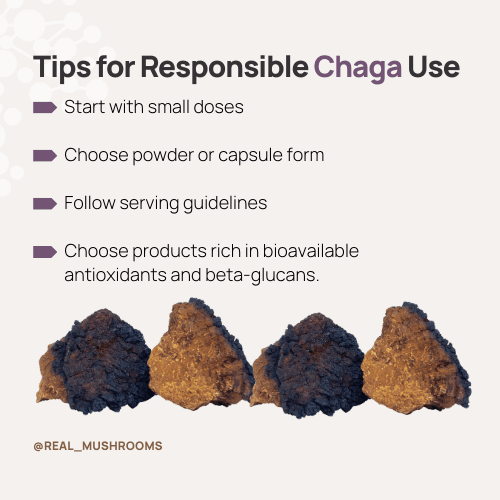
With a thoughtful approach and trusted products, taking Chaga mushroom supplements or herbal tea can be a safe addition to your daily routine.
Known for its potential immune system support and antioxidant effects, Chaga offers unique benefits when consumed responsibly. Choosing high-quality products ensures you gain the maximum health benefits while minimizing risks.
Chaga mushrooms are valued for potentially supporting healthy cells and boosting immunity, but they must be consumed with care to ensure safety and effectiveness. Understanding the potential side effects of Chaga and prioritizing high-quality products over alternatives like cultured mycelia can make all the difference.
At Real Mushrooms, we focus on delivering 100% organic Chaga supplements, free of fillers, grains, or starches, and designed with science-backed quality. By choosing natural, mushroom (fruiting body) products, you’re ensuring the highest concentration of active compounds for your wellness needs.
Explore our range of trusted Chaga supplements and educational resources today to start consuming Chaga mushrooms in a way that supports your health naturally and responsibly.

Chaga is an adaptogenic fungus that can have excellent health benefits for the skin and body. Although it’s commonly known as chaga mushroom, it’s not an actual mushroom. It’s a parasite that grows on certain hardwood trees, and you can easily identify chaga as it looks like a black, lumpy wood knot.
Want to learn what trees chaga mushrooms grow on? Read below to learn more about this health-boosting fungus and where to find it!
As a parasite, the chaga fungus (I. obliquus) has a one-sided relationship with its host tree. Its enzymes cause the simultaneous decay of cellulose, hemicellulose, and lignin (the three main biological constituents that make up the wood of trees) from the heartwood of its living host.
The breakdown of the heartwood weakens the tree’s infrastructure, allowing for the first traces of what we call “chaga” to protrude from within the tree.
Chaga can be considered a sterile conk or canker that forms on hardwood trees. This dark conk consists primarily of wood lignans and mycelium (the fibers that can be thought of as the fungal root structure).
Some call chaga mushrooms a sclerotium, but as they are not pure mycelium, like what is produced by poria (Wolfiporia extensa), polyporus (Polyporus umbellatus) or the tiger milk mushroom (Lignosus rhinocerus), this would be an incorrect characterization. In fact, one paper estimated chaga to be only around 10% mycelium (4).
Chaga grows in regions including Canada, Russia, Siberia, northeast China, northern areas of Europe and the United States. Its mushrooms are typically found on birch trees, aspen trees, and other trees in boreal forests.
Finland is a country where chaga grows abundantly. It was one of the first countries to try inoculating birch trees to encourage the growth of this fungus for harvesting.
Dried chaga can be used to make chaga tea, chaga tincture, and other chaga products.
Edible Mushroom? Although chaga mushrooms are considered edible, they have a bitter taste. Additionally, people consider wild-harvested chaga more pleasant tasting than cultivated chaga.
Geographically, I. obliquus grows on tree trunks of a variety of hardwood trees in cold habitats (45°N to 50°N) of North America, Eastern Europe, and Asia.
While chaga grows most commonly on birch trees, other species of trees commonly infected include (1):

Harvesting Chaga: Proper chaga mushroom identification is crucial to ensure you’re getting genuine chaga and not false chaga (e.g., tree burls, black knots, and other fungi). If you don’t know how to distinguish chaga from other mushrooms, use these apps to help you harvest chaga safely and accurately.
Chaga growth is a process that very slowly affects its host, and the fungus can exceed 50 cm in diameter on old trees after many years (2).
The decay of the heartwood can last for another 30 to 80 years, although wild chaga can be harvested after 3-5 years of growth. When the host tree or a part of it dies, the actual mushroom (fruiting body) of chaga can appear.

In the first stage of chaga mushroom growth, its spores have penetrated the birch tree, germinated, and have begun to consume the heartwood.
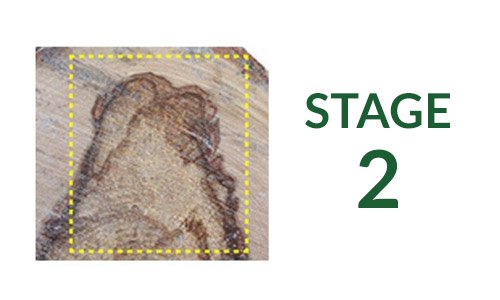
In the second stage of growth, the fungus will then push toward the exterior of the tree, consuming the wood as it goes.
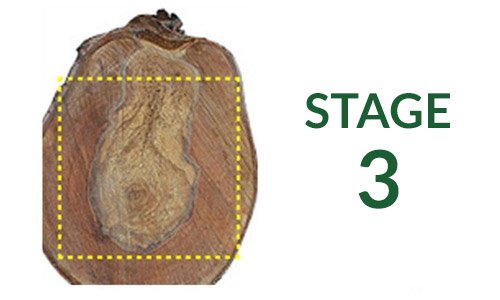
In its third stage of growth, the fungus will break through the bark and begin to form the canker of mycelium and wood lignins we call "chaga."
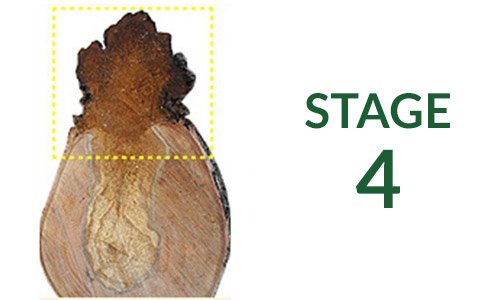
Over many years, the chaga mushroom grows much bigger and darker. It largely contains wood fiber & lignin, which house many of the nutrients found in the host tree.
For example, chaga that grows on birch trees will contain betulinic acid and its precursor, betulin. These triterpenes (natural plant compounds) have potent antioxidant, anti-ulcer, anti-gastritis, and immunomodulatory effects (3). Chaga is also nutrient-dense, containing vitamin D, potassium, zinc, and other vital vitamins and minerals.
Knowing what trees chaga grows on will help you locate and identify it. When you find this “black gold” parasitic fungus, you can then harvest part of it to make your own health-boosting chaga tea!
Experience the chaga’s benefits with ease by ordering our 100% organic real chaga extracts. Our supplements are third-party tested to ensure you get beneficial compounds such as beta-glucans whether you buy our Chaga Extracts supplements in powder or capsule form.
For more information on the health benefits of chaga, read our article, Chaga Mushroom Benefits: A Science, Health, & Supplement Guide.

Mushrooms seem to be in everything these days, including varieties once considered exotic, like cordyceps, lion’s mane, and reishi. You may have noticed that more and more food, dietary supplements, drinks, and even skincare products contain a wide range of functional mushrooms.
Among the most popular functional mushrooms is chaga (Inonotus obliquus (Fr.) Pilát). Consuming chaga mushrooms is believed to boost the immune system, maintain blood sugar levels, regulate digestion, and other positive interactions with the human body.
The health benefits chaga mushrooms bring to the table have been touted for centuries. Thanks to modern research and scientific methods, we can now confirm the varied positive impacts this adaptogenic fungus can have on the body.
If you think taking chaga mushrooms can contribute to your wellness, this guide will walk you through the health benefits chaga mushrooms can offer.
Although people will generally refer to it as “chaga mushroom,” chaga is NOT actually a mushroom.
What we call chaga is the common name for a sterile conk or canker that forms after a hardwood tree (usually birch) has been infected by the parasitic fungus Inonotus obliquus (or I. obliquus).
As a parasite, I. obliquus has a one-sided relationship with its host tree. Its enzymes cause the simultaneous decay of cellulose, hemicellulose, and lignin (the three main biological constituents that make up the wood of trees) from the heartwood of the living host.
The breakdown of the heartwood weakens the tree’s infrastructure, allowing for the first traces of what we call “chaga” to protrude from within the tree. This dark conk consists primarily of wood lignans and fungal mycelium (the fungal root structure).
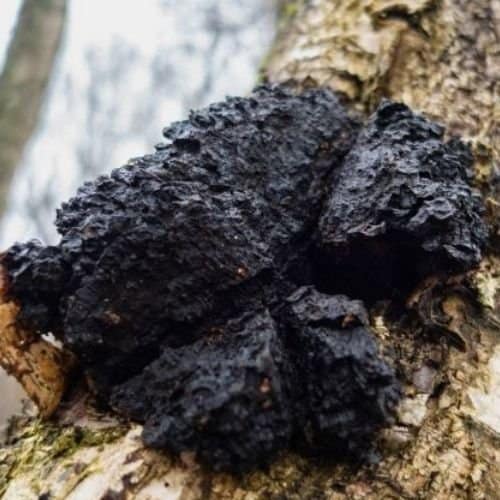
Chaga Facts: Learn more about how chaga grows and where it can be found by reading our article, “What Trees Does Chaga Grow On?”
The chemical composition of chaga was first studied by German-born chemist and pharmacist Johann Georg Noel Dragendorff in 1864. Since then, scientific analyses have revealed over 200 different bioactive metabolites.
Many of these metabolites can support human health, including:
Of all these, the polysaccharides are the most active compounds in chaga.
Polysaccharides are large molecules made up of many simple sugars (monosaccharides). The most important polysaccharides found in chaga are the (1>3)(1>6) beta-D-glucans.
Beta-glucans from functional mushrooms like chaga provide unique opportunities for the discovery and development of new therapeutic agents. In recent years, beta-glucans have received much attention due to their many health benefits, such as immunomodulatory, hepatoprotective, and antioxidative activities [2].
Chaga contains high levels of melanin, giving it the potential to help mitigate radiation-induced damage in these demographics.
Melanin is a skin pigment in mammalian skin, hair, eyes, ears, and the nervous system. It provides a wide range of health benefits, including protection against UV radiation and oxidants (free radicals).Fungal melanin, in particular, has powerful antioxidant and DNA-protective properties, as demonstrated in both in vitro and in vivo animal studies. In one study, melanin in wood ear, a black-colored mushroom, protected 80% of mice from a lethal dose of radiation [3].
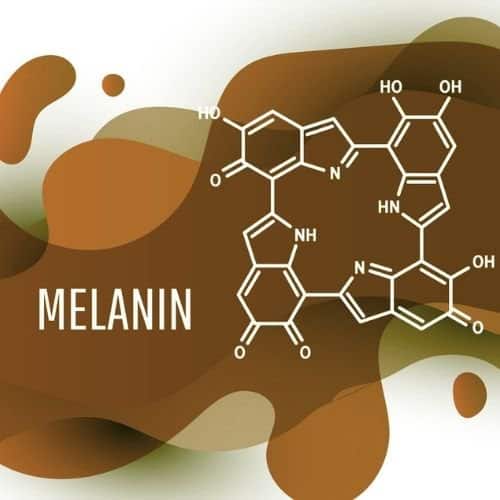
Chaga and its unique triterpenes have anti-viral properties, as shown in animal and cell studies [48,49].
Chaga contains several types of triterpenes, the most important being inotodiol, a triterpenoid found only in chaga. Inotodiol has also shown immunomodulatory and antioxidant effects [5,6].
Two other notable triterpenes—betulinic acid and its precursor, betulin—are found in birch bark, where chaga gets these compounds. Betulin and betulinic acid have demonstrated antioxidant, anti-ulcer, anti-gastritis, and immunomodulatory effects.
Betulinic acid may help decrease atypical cell growth and is theorized to work by supporting the mitochondria (the parts in each of our cells that help with energy production) [46].
Historically, chaga has been used to provide a wide range of health-promoting effects.
Here are nine potential health benefits of the so-called “king of mushrooms”:
Chaga can boost oxidative phosphorylation to support adenosine triphosphate (ATP) production without leading to heavy oxidative stress.
Humans, like many other organisms, need oxygen to live. Without oxygen, mitochondria, the powerhouses of cells, would be unable to produce the chemical energy or ATP needed to fuel biological processes in the body.
While oxidative phosphorylation is an essential process, it also produces cell-damaging free radicals. Various factors like stress, diet, and environmental exposure can result in a surplus of free radicals compared to the anti-oxidants that would combat them. This imbalance is referred to as “oxidative stress.”
Dangers of Oxidative Stress: Severe oxidative stress can damage cell components (including DNA), cause cell death (also known as inappropriate apoptosis), and disrupt cellular signaling. It can also lead to premature aging and the development of many age-related ailments and conditions.
Chaga produces an impressive array of metabolites capable of acting as potent free radical scavengers. The metabolites in chaga mushrooms benefit DNA health by protecting it from oxidative stress damage.
One study demonstrated that human blood cells pretreated with chaga mushroom extracts before exposure to the free radical H2O2 showed 40% less DNA damage than those that weren’t pretreated [7].
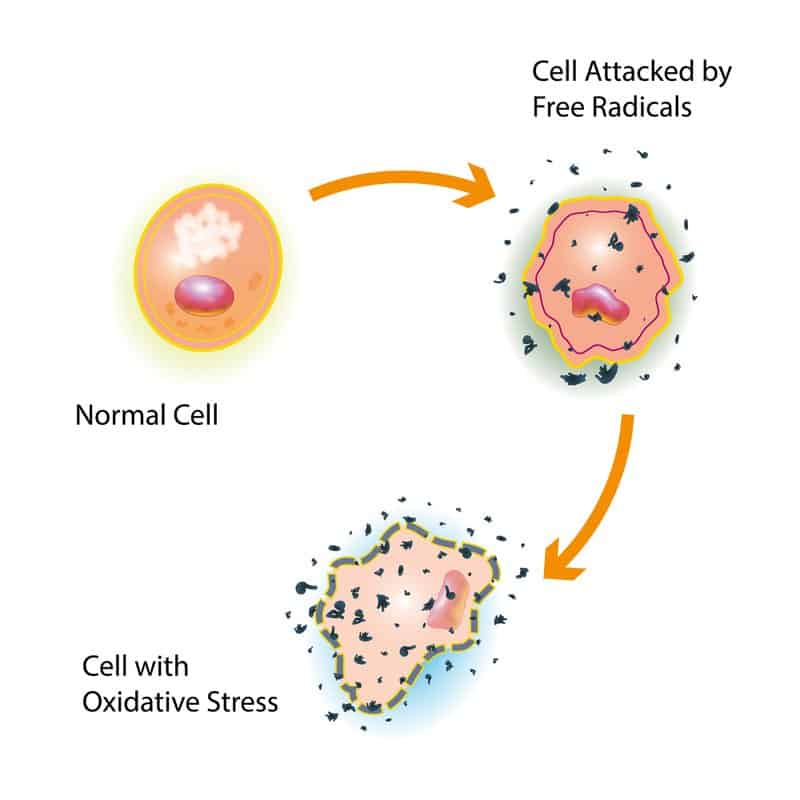
Chaga ranks very high on the Oxygen Radical Absorbance Capacity (ORAC) scale, which measures antioxidant power.
However, ORAC values came under scrutiny in 2012 when the USDA removed its ORAC Food Database, citing that the test did not directly correlate to health benefits (i.e., higher is not necessarily better) and that ORAC values were being misused by food and supplement ingredient suppliers to promote their products.
Chaga is a source of trace minerals like zinc, copper, iron, and manganese, which can stimulate the production of superoxide dismutase (SOD) in cells. SODs are enzymes that form the first line of antioxidant defense against damage caused by free radicals.
There is some concern that oral administration of SODs is not effective because they are degraded before they can get absorbed into the bloodstream. Still, there have been studies demonstrating the efficacy of oral SOD supplementation [8-10].
Consuming chaga mushrooms has been revered in folk medicine for centuries to encourage gastrointestinal health and digestive comfort.
Modern research confirms that chaga mushroom benefits include gastroprotective properties with the capacity to help regulate the gut microbiota. For instance, alcohol extracts of chaga helped protect the integrity of the stomach wall when given to rats at 200 mg/kg [11].
In another study, mice were fed alcohol chaga extracts at 50 and 100 mg/kg body weight. The results showed that by regulating the release of cytokines, chaga supported the health of the colonic mucosa [12].
The antioxidant activity of polysaccharides in chaga supported pancreatic health and regulated gut microbiota composition and diversity in mice studies [13,14].Chaga supplementation in patients with Irritable Bowel Disease (IBD) showed decreased damage to human lymphocytes [47].

The antioxidant range in the chaga mushroom benefits the body by supporting a healthy inflammation response.
Inflammation is the immune system’s primary response to various triggers, such as toxic agents and foreign invaders. It is also part of the body’s natural healing process.
Your body releases inflammatory chemicals to help mitigate cell damage and to restore tissue homeostasis. However, interrupted or prolonged inflammation cascades can create body damage and disease.
Chaga appears to modulate the release of certain cytokines involved in inflammation [15]. It also appears to be an inhibitor of nitric oxide (NO) and COX-2 in rats, which may explain its ability to alleviate temporary discomfort [15,16].
Chaga is a highly popular adaptogen that affects the body’s immune function.
You may have read or heard the term “adaptogen” or biological response modifier (BRM) when discussing certain herbs and functional mushrooms. As the name implies, BRMs are substances that can modulate the immune system’s response by either turning it up or down.
An adaptogen is a type of BRM that must meet the following three criteria [17]:
Essentially, adaptogens help your body adapt to stress and maintain balance.
As an adaptogen, chaga mushroom benefits overactive immune systems in certain demographics by providing balance in immune health response. Initidiol, a triterpenoid unique to chaga, acts as a mast cell stabilizer and can support eye and nasal comfort in mouse models [18].
While the immune system is designed to protect the body against foreign invaders, it can also create discharge symptoms. This response can affect the eyes, sinuses, and lungs, usually showing up as mucus, pain, or inflammation.
Watch Allergy Symptoms: Allergies aren’t always harmless. Some individuals may experience anaphylactic shock—a severe and sometimes life-threatening allergic reaction.
Chaga can promote the secretion of certain cytokines to modulate immune responses in mice [19]. A new animal study also showed that chaga mushroom extracts prevented chemically induced immune system overreactions, demonstrating its potential as a useful functional food [20].
Other studies have shown that the active compounds in chaga may have selective activity against many types of malignant cells, specifically in relation to the inhibition of p38 kinase and ERK1/2 pathways [21-22,62].
Healthy blood sugar levels are linked to heart, blood vessel, nerve, kidney, skin, and brain health [23]. If you want the answer to “can chaga lower blood sugar levels?”, it’s a bit more complicated than you might think.
Regarding blood sugar, chaga mushrooms are believed to maintain balanced blood sugar levels. Consuming chaga mushrooms can be beneficial for people with insulin resistance or polycystic ovarian syndrome (PCOS).
Insulin is the hormone responsible for moving glucose in the bloodstream into your muscle and fat cells to be stored for energy production. However, some people may develop insulin resistance from certain conditions (e.g., obesity, type 2 diabetes, etc.), which makes it challenging to regulate blood sugar levels.
When it comes to regulating cholesterol, chaga mushrooms have shown evidence in studies of potentially managing cholesterol imbalances in the body. This makes chaga a beneficial supplement for people struggling with high cholesterol.
Multiple animal studies suggest that chaga may be able to support balanced blood sugar levels [24-26]. In one study, investigators found that mice fed dry matter chaga extract for three weeks were able to better maintain healthy blood glucose levels as well as total cholesterol, triglyceride, and low-density lipoprotein cholesterol (LDL-C, “bad cholesterol”) levels.
Triglyceride and cholesterol imbalances are almost always tied to metabolic health in relation to insulin sensitivity and glucose management. Most notably, the research team found that feeding chaga supported healthy pancreatic tissue in mice (the pancreas is the organ that secretes insulin) [26].
A follow-up research confirmed these effects on blood sugar and cholesterol. Mice treated with either 30 or 60 mg/kg body weight of chaga ethanol extract for 21 days had similar results as in the first study [27].
In another animal study, rats were administered either polysaccharides extracted from chaga (at doses of 10, 20, and 30 mg/kg) or saline (which acted as a placebo) for six weeks. At the end of the study, the rats given chaga were better able to maintain blood glucose levels within healthy limits than the rats given saline, and their pancreatic beta-cells were also healthier [24].
The chaga mushroom benefits for balancing blood sugar may be attributed to the inhibition of an enzyme (alpha-glucosidase) that breaks down starch by its polysaccharides. Blocking this enzyme helps slow down glucose absorption in the digestive organs [28].
Research performed in vitro showed the polysaccharides in chaga inhibit this enzyme, demonstrating that chaga warrants more research into its effects on blood glucose modulation [25]. Based on these results, more clinical data from human studies are needed to advance our understanding of chaga’s relationship with blood sugar.
Chaga is an adaptogen that has the capacity to support allostasis, or stability while undergoing change, in the entire body. This potentially includes your energy levels and muscle endurance, as seen in animal studies.
An animal study showed that chaga may help increase exercise endurance. Mice that were given chaga extracts for 14 days (at 0, 100, 200, and 300 mg/kg) were able to swim for a longer period of time than those given distilled water.
Scientists noted that the mice given chaga also had significantly more glycogen—the predominant storage form of glucose for energy production—in their liver and muscles.
Glycogen storage directly affects exercise endurance, and the results of this study suggest that chaga might help increase the time before glycogen is depleted [29].
Chaga polysaccharides also greatly reduced blood lactate levels in the mice. Muscles produce high levels of lactate during high-intensity exercise, which contributes to fatigue. Therefore, removing lactate quickly is beneficial to prevent or delay muscle fatigue [29].

Additional Chaga Info: For more information on how chaga and other healthy mushrooms can help support exercise endurance, read our article, “Stimulant-Free Pre-Workout & Post-Workout Mushroom Supplements.”
As a folk remedy, chaga extracts are one of the fungi that can be used to boost immune system function.
The immune-supporting activity is believed to be due to the diverse constituents found in chaga, such as [48,49]:
Chaga’s other bio-compounds are being investigated by the scientific community as potential agents to protect the body against variopus foreign invaders [30–35].
Beta-glucans and betulinic acid in chaga may help slow down signs of aging in your skin. Chaga infusions can help comfort irritated skin and reduce redness and dryness.
A case study of 50 people found that after taking chaga for 9 to 12 weeks, individuals experienced improved skin health, as demonstrated by increased skin comfort, smoothness, and moisturization [36].
Melanin also plays an important role in skin health. The melanin found in chaga is believed to protect human skin against DNA damage by absorbing UV radiation. An in vitro study discovered that melanin increased the sun protection factor (SPF) of gel sunscreens [37].
Another study found that melanin functions as a free radical scavenger, which can also help keep your skin looking younger for longer [38].

Oxidative stress is a major contributor to mild memory problems associated with aging.
A team of researchers investigated if chaga had any protective effects in mice with chemically induced cognitive decline. They found that mice given chaga for seven days had significantly improved learning and memory compared to those that did not receive the fungus [39].

When it comes to chaga, understanding the right dosage and being aware of safety considerations and potential side effects is crucial. This will help you maximize the benefits while minimizing any risks.
The typical dosage is 250 to 500 mg of an 8:1 extract two to three times a day [4]. However, the appropriate dose depends on various factors, such as your:
The dosage that works for one person may not work for you. The quality of the chaga extract you use will also significantly affect the health benefits you get.
One animal study used 6 mg/kg of chaga extract per day (the equivalent of 408 mg for a 150-pound person) [40]. That being said, we highly recommend that you start with small doses of chaga and increase slowly over time to the recommended dose.
Chaga extract supplements are generally well tolerated, with few reported side effects. However, it’s important to remember that the studies demonstrating chaga mushroom benefits were performed on cells or animals.
There have been no randomized human clinical studies to evaluate chaga's safety, but there is strong historical evidence of its use in traditional remedies. Therefore, you should consult a health practitioner prior to taking chaga if you have certain health conditions.
The polysaccharides and other substances found in chaga are known to affect blood circulation. For this reason, individuals with bleeding disorders or those on anticoagulants (blood-thinning medications) should exercise caution when considering chaga extract supplements.
This could pose an issue when combined with anticoagulants, depending on the chaga dose. Chaga may also affect blood glucose levels, so monitor your blood sugar levels while using it.
One safety concern stems from the fact that chaga contains oxalates, organic acids also found in vegetables, grains, and fruits. Research suggests that chaga contains anywhere from 2–12% of oxalates, depending on the source.
While oxalates are naturally expelled from the body, some individuals may develop complications from eating a diet high in oxalates. This is because extra oxalates combine with calcium to form kidney stones and crystals [41].
In one published case, a 72-year-old Japanese woman consumed four to five teaspoons of chaga mushroom powder per day for six months (a dose far higher than any recommended by Real Mushrooms).
The source of her chaga extract powder was unclear, as well as whether it was contaminated or an extract. She developed oxalate nephropathy and eventually irreversible renal failure [42].
However, following the guidelines for dosage on Real Mushrooms’ chaga extract powder or chaga capsules will help to avoid over-consumption.
Within the classification of oxalates, there are two forms: soluble and insoluble. Chaga has both forms.
Soluble oxalates are absorbed into the blood and need processing by the kidneys. Insoluble oxalates are bound to minerals and don’t get absorbed or processed by the kidneys [43].
Oxalates are higher in several common foods such as chocolate, grains, nuts, and certain greens (rhubarb, chard, and beet tops). Mushrooms grown with high heavy metal substrates may form calcium oxalates at a higher rate, which is more concerning for kidney stone formers [44].
Generally, wild-harvested chaga has fewer oxalates than cultivated chaga.
Grown for Purity: Real Mushrooms’ chaga is wild-harvested and tested for heavy metals along with other rigorous quality control measures. Additionally, Real Mushrooms powder and capsules are extracts rather than whole powder, which also lowers their oxalate content.
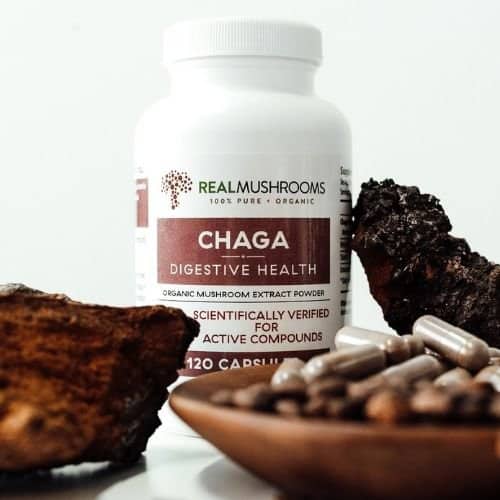
There are no known side effects of taking chaga mushrooms. However, the impact on the immune system and blood sugar levels may cause some complications.
For instance, individuals with a history of kidney stones, a strong antibiotic history, low hydration, or low calcium status should consult a professional before using chaga mushrooms in any form.
You should also think twice about using chaga mushroom products if you have a medical condition or are taking medication that regulates your blood sugar levels (e.g., diabetes medications such as insulin, alpha-glucosidase inhibitors, biguanides, etc.) Doing so will prevent the risk of adverse drug interactions.
We highly recommend consulting a health practitioner before taking chaga mushroom supplements if you have any health concerns.
Chaga is a natural product, which means its properties will vary greatly depending on its growing conditions.
Since chaga mushrooms (I. obliquus) are restricted to very cold climates, they’re regularly exposed to freezing temperatures, various pathogenic microbes, and UV irradiation in their natural environment [31]. These harsh conditions contribute to chaga mushrooms’ unique chemical composition.

Concerns about overharvesting chaga have led researchers to try growing I. obliquus in a laboratory. However, attempts have so far been unsuccessful at achieving the diversity and levels of the bioactive compounds found in wild chaga.
Without the birch tree involved in the growing process, betulin and other important compounds will not be present. One study noted that the immuno-stimulating effects of lab-grown chaga only reached about 50% of those of wild chaga [31].
Another evaluation found that wild and cultivated chaga differ greatly in chemical composition.
Wild chaga contained diverse sterols, with 45.47% lanosterol, 25.26% inotodiol, and ten other sterols comprising the remaining 30.17%. In comparison, the cultured chaga only contained three sterols, with ergosterol being the predominant sterol at 82.20% [45].
Research is ongoing to improve chaga cultivation techniques. Currently, in Finland, birch trees are being inoculated with chaga in order to cultivate it directly on the host tree.
It’s clear that many of the chaga mushroom health benefits are a result of its years-long struggle for survival in harsh environments where it thrives.
When choosing your chaga extract supplement, it’s important to know where the product is sourced. Because chaga grows so slowly, it can accumulate a high level of toxins from pollutants in the air.
It’s for this reason that Real Mushrooms only uses wild-harvested organic chaga from Siberia to ensure the highest purity extracts possible. Real Mushrooms Organic Siberian Chaga is extracted using hot water, which pulls out all water-soluble compounds like beta-D-glucans.
There are many ways to benefit from chaga mushrooms for health support, especially by taking them as chaga mushroom supplements.
Keep in mind that the effects of adaptogens like chaga are cumulative. For the best results, take chaga consistently to help your body resist occasional stress and support your immune system.
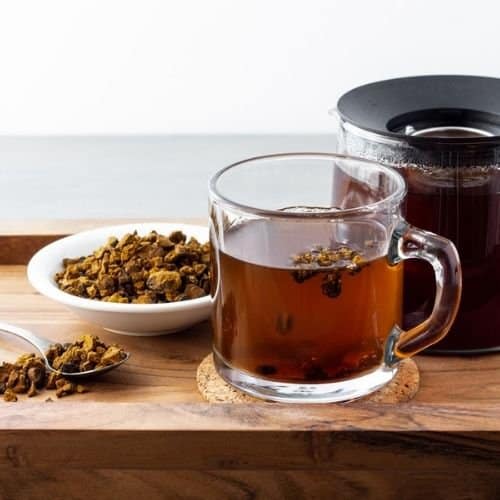
Chaga has traditionally been consumed as tea in Finland, Russia, and other countries. Raw chaga chunks can be soaked in hot water, which acts as an extraction agent for all the nutrients from the chitinous interior of the chaga.
If you live in the Northern part of the world where chaga grows naturally, you have the opportunity to harvest this fungi to make homemade chaga tea.
The most accessible way to make chaga tea is by using a high-quality pure chaga extract like the Real Mushrooms Chaga Extract powder. The hot water extraction method used for our chaga products ensures a higher concentration of beneficial bioactive compounds.
It’s also more economical—the amount of powder needed to make the tea is much smaller than using actual chaga chunks.
Chaga Tea Recipe: For our chaga tea recipe, read our article, “How to Make Chaga Tea and 9 Other Chaga Recipes.”
If you’re always on the go, you probably don’t have time for elaborate recipes. That’s why Real Mushrooms has produced an Organic Siberian Chaga Extract in capsule format. Just two capsules a day provide 1,000 mg of chaga extract with over 8% beta-D-glucans.
For coffee drinkers or those who prefer powder, our Organic Siberian Chaga Extract in powder format may be the perfect choice for you. To many, chaga tastes slightly bitter and earthy, making it a complementary flavor profile to your morning coffee or your evening hot chocolate.

Here are the top four things to remember when purchasing a chaga supplement to get the most health benefits for your dollar:
As with any dietary supplement, don’t forget to consult a healthcare professional before using chaga supplements to prevent drug interactions with anticoagulant drugs and other forms of medicine. Being transparent to your healthcare provider regarding your health concerns is an effective way to maintain your wellness and overall health.
Chaga mushrooms have great potential to improve your overall health. With its various health benefits that can boost immune health support, blood sugar regulation, cognitive function, taking chaga can be a great way to reach your wellness goals.
To begin experiencing the potent health benefits of chaga mushrooms, try one of our 100% organic chaga powders or organic chaga capsules extracted straight from fruiting bodies.
Check out our wide selection of 100% organic chaga mushroom supplements today! Let us know if you fell in love with these special functional fungi like so many of our other customers!
*Disclaimer: The statements made in this article have not been evaluated by the Food and Drug Administration. Any products mentioned are not intended to diagnose, treat, cure, or prevent any disease. The information in this article is intended for educational purposes. The information is not intended to replace medical advice offered by licensed medical physicians. Please consult your doctor or health practitioner for any medical advice.

Spring is the ultimate time for targeted detoxification. A spring cleanse in 2022 may be more necessary than other years due to the pandemic and its impact on health routines and an increase in stress.
The word detoxification (detox) means to remove a harmful substance. These harmful substances can come from our environment (think diet, chemicals, pollution) or from internal processes in our body (bacterial by-products from poor or incomplete digestion).
There are popular detox or cleanses out there that involve celery or juice fasting and restricting calories. But these trends can sometimes leave some people confused and worse off than before. Gentle cleansing methods can help maintain normal bodily functions while supporting the removal of toxins.
A common thread of all these detox programs is they eliminate processed foods. There are some benefits to fasting, but consistent under-eating may decrease the number of minerals, amino acids, and co-factors you actually need for proper detoxification.
Fasting as a dietary cleansing habit may actually impact thyroid, insulin, and cortisol function as well. Instead, incorporating normal, nutrient-dense foods and mushroom extracts can help maintain overall health.
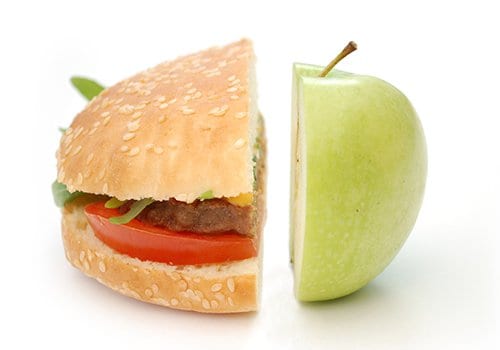
Firstly, think of detox as a daily or long-term cleansing strategy rather than a miserable two weeks of using laxative teas. However, a short, focused set of strategies can help kickstart healthier habits throughout the year.
The following article will outline 9 focus areas to understand and incorporate into your spring cleanse protocol so that you can achieve functional and healthful detoxification. You will also learn which mushroom detox extracts you can incorporate to support each of these 9 detox focus areas.
A) Spring Cleanse Your 6 Detox Organs
B) Spring Cleanse Your Nutrition
The major detoxification organs in your body, also known as your emunctories, are your liver, kidney, colon, lymphatic, and skin. Environmental and internal toxins, along with stress, can decrease the function of your main detox organs.
In this detox guide, we take you through the function of each of your emunctories, how you can support them, and what mushroom extracts can be used to enhance their performance. Chaga mushroom and other mushroom extracts can help protect and support these organs during the cleansing process.

The liver functions in distinct phases to detoxify harmful substances from your body.
Healthy mushrooms are a source of ergothioneine and glutathione, two key antioxidants that can aid with oxidative stress in the body. In fact, healthy mushrooms are the top dietary source of ergothioneine out of any food (1).
Mushrooms also have compounds called beta-glucans that have been studied for their antioxidant properties. Studies on natural fungi like Chaga mushroom have also shown it to have substantial antioxidant properties (2).
Chaga mushroom extract can be a great addition to your spring detox routine, as it provides powerful antioxidant support.
Some mushrooms that may help support the liver, specifically, are reishi and shiitake. In fact, the triterpenes in reishi have been found to modulate processes related to liver function. In-vitro, animal, and human studies have demonstrated the possible hepatoprotective properties of Reishi (2). More research is needed to determine how molecules in mushrooms support the liver.
Other required co-factors for phase 1 of liver detox include vitamins B, E, and C. Healthy mushrooms contain B vitamins, a small amount of vitamin C, selenium, zinc, vitamin D, and choline, all important nutrients for our body’s detoxification processes.
Phase 2 liver detox is all about conjugation, meaning it takes toxins that have been processed in phase 1 and adds different compounds to make it easier to excrete through your stool (via bile) or urine.
Co-factors required for phase 2 include cruciferous vegetables, citrus acid, resveratrol-rich foods, amino acids, vitamin B12, glutathione, sulfur, and minerals.
Healthy mushrooms are a food rich in amino acids and are especially handy if you are vegan or vegetarian. They also contain important minerals like phosphorus, sodium, and calcium. A gentle mushroom extract like chaga mushroom can be a more balanced approach to supporting your body's natural detoxification process.
Bitter herbs and foods with citric acid are important for the adequate release of bile. The liver releases bile and toxins that are stored in bile for elimination via the stool (and other emunctories when needed). Reishi is a bitter-tasting healthy mushroom that can interact with the bitter receptors in your body which support digestive function, vessel function, and possibly detoxification or cleansing.
Your spring cleanse will best support your liver’s detoxification processes if it includes cruciferous vegetables, citric acid, resveratrol-rich foods (such as grapes, cranberries, and peanuts). Use a reishi mushroom supplement to support healthy liver function and a chaga mushroom supplement to add a powerful antioxidant punch to your diet.
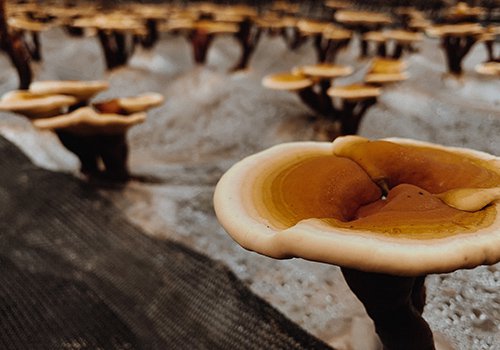
Kidneys flush water-soluble toxins detoxed from the liver out of the body while keeping important electrolytes and minerals. Kidneys remove extra acid produced by reactions and metabolism in the body, thereby keeping our acid-base balance in check.
When the bowels are not moving well, and/or the liver is taxed, toxins spill into the blood to be cleared by the kidneys. High blood pressure, puffiness or water retention, and low energy could be signs of decreased kidney function.
Although there is no single physiological detox action you can do to support the kidneys, it is important to support a healthy lifestyle with foundational strategies, such as stress management, water and electrolyte intake, decreasing toxins, and avoiding substances that increase blood pressure and stress on the kidneys, such as excess sodium and caffeine. Healthy mushrooms contain minerals that can support the body’s electrolyte needs, such as potassium and magnesium.
Interconnected with the kidneys are the adrenal glands. The adrenal glands are responsible for the release of stress hormones such as cortisol, adrenaline, and noradrenaline. The adrenal glands are a key indicator of one’s level of vitality and stress management - two important things to consider when thinking about detox and cleansing.
Many of the healthy mushrooms are classified as adaptogens meaning they can help the body develop resilience to stress through their unique compounds. Reishi is particularly good at helping to calm, cleanse, and balance the body.
Your spring cleanse will best support your kidney function if you increase your water and electrolyte intake, reduce sodium and caffeine intake, and manage your stress levels. Consider taking a supplement of reishi, touted as the most versatile functional mushroom, to help balance and calm your body and make it resilient to stresses.
Bowel movements and healthy poops are a top priority when looking to start a detoxification journey. Having a bowel movement at least once and up to 3 times per day is considered healthy.
We need daily elimination to remove the conjugated toxins released into the stool. There are many factors that can impede proper bowel function, including spinal misalignments, poor thyroid function, poor nutrients/vitamin or mineral status, stress (holding on), microbiome alterations or dysbiosis, dehydration, and poor diet.
High fiber diets provide bulk for the stool and can act as a binding agent along the way. Healthy mushrooms have around 1 gram of fiber per 1 cup (approximately 70 grams of raw mushrooms). Also, exercise can improve the function and structure of our gut health.
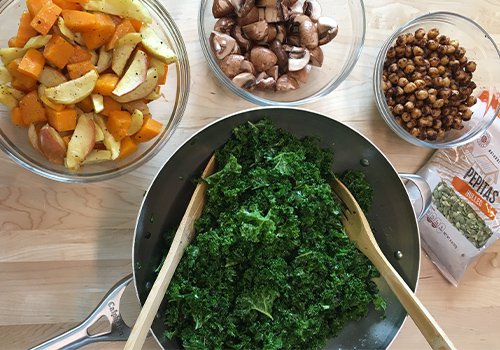
Increased gut wall permeability, and food sensitivities or intolerances can increase gut inflammation which may contribute to constipation and a dysfunctional bowel. Oxidative stress and antioxidant depletion may enhance gut wall permeability. Therefore, antioxidants are necessary to support healthy mucosal barrier function. (3,4,5). Healthy mushrooms that are loaded with antioxidants, such as Chaga mushroom, may be of interest here for antioxidant supportive effects (2). Chaga mushroom also stimulates bile flow, which is important for fat digestion.
Your spring cleanse can best support your colon and gut health by including foods high in fiber and antioxidants. Consider adding a Chaga mushroom supplement from Siberia for an antioxidant boost and support for healthy digestion.
If toxins and elimination wastes aren’t removed through the liver, gut, and kidneys then these will back up into the skin or lymph. Skin is not an efficient “detoxer” — pores get congested, and skin manifestations occur.
It is healthy to support the skin on a regular basis via the natural cleansing power of sweating. Sweating is easier in the summer but harder in the winter to achieve. Sweating can excrete certain heavy metals and lipid-soluble waste products. Sweat is also very healing for the skin, as it has inherent antimicrobial properties.
Skin brushing can support both the skin via exfoliation and the lymphatic systems via increased lymph drainage. Sauna, exercise, healthy skin products, hydrotherapy, and massage are all efficient means to support this organ of elimination.
Tremella mushroom and Chaga mushroom extract powders can be used internally and topically to support healthy skin. Explore our article on mushrooms and skincare for ways to use various mushroom extracts to benefit your body’s largest organ.
To support your skin health during your spring cleanse, sweating and exfoliating are recommended. Now would be a good time to visit a hammam or sauna and to receive a full-body salt scrub. Exercise regularly, stay well hydrated and consider taking a tremella supplement or Chaga mushroom supplement to support healthy skin rejuvenation.

The lymphatic system is made up of lymph fluid, lymph nodes, vessels, and other key organs like the spleen, thymus, GALT, tonsils, and adenoids. This system becomes important for health maintenance because of the connections it has with many systems of the body: circulatory, immune, and endocrine, for example.
This system is crucial in helping the body defend against infection (by producing and delivering key immune cells, known as lymphocytes) and in transporting and removing waste products from the body’s different organs, tissues and cells.
When lymphatic fluid has proper flow, the wastes and toxins can make their way into the blood and to other emunctories. Unlike the heart, the lymphatic system needs help from muscles or some form of movement to propel the lymph fluid through the body. Exercise, lymphatic massage, electrolytes, rebounding, vibration, hydrotherapy, and sweating can help support the lymphatic system.
Adaptogenic mushrooms, such as cordyceps, reishi, or lion’s mane, are a great coffee replacement to sustain healthy energy levels so you can keep moving your body and keep your lymphatic system happy and healthy. Also, one of the mushroom’s main mechanisms of action takes place in the lymphatic tissue in our digestive system. To learn more about this check out our beta-d-glucan article.
The lymphatic system also helps our brains detox during deep sleep when toxins and wastes are removed from our central nervous system. This is known as the glymphatic system. Proper melatonin secretion is needed for this cleanse to work. Sleep is a time for deep healing, as our sleep-wake cycle hormones and nervous system tone act as conductors for our hormone and immune systems. The reishi mushroom has been used traditionally to aid in sleep support.
Exercising your muscles will help to keep your lymphatic system flowing well as you undertake your spring cleanse. Rebounding on a mini-trampoline is a good exercise for promoting the circulation of lymphatic fluid, but brisk walking and other forms of activity will do the same. Consider getting a massage that focuses on lymphatic drainage. Also, consider using a reishi supplement to promote restful sleep so that you can properly detox and cleanse your central nervous system.

Our lungs expel waste products in the form of volatiles and gases daily. Our lungs also ensure the rich oxygenation that our cells and mitochondria require for an optimal detox and deep cleanse.
Traditionally, cordyceps mushrooms were used for tonifying the lungs in Chinese medicine. Cordyceps also has some evidence suggesting it may impact athletic performance, depending on someone’s existing lung function (6).
Our lungs are also a key organ for stress management, as breath awareness and breathing exercises provide a direct gateway to our autonomic nervous system — the original biofeedback.
To support your lung health during your spring cleanse, consider taking a cordyceps mushroom supplement. Now is also a time to incorporate mindful breathwork into your daily routine if you haven’t already. While it likely goes without saying, eliminating smoking of any kind and minimizing exposure to air pollution are essential for optimal lung health.

A spring cleanse is an opportunity to address health concerns that may be caused by or exacerbated by what you eat. One of the problems that can occur from an improper diet is toxemia.
Toxemia, also known as metabolic endotoxemia, is an immune response that becomes a driver of persistent, smoldering inflammatory processes due to endotoxins, the most common being lipopolysaccharides (LPS).
An increase in LPS (and other endotoxins) results in increases in inflammation. Inflammation is a risk factor for pain, decreased mental clarity, and low energy.
As bacteria in our gut die, they create LPS which is part of the outside wall structure of gram-negative bacteria. These LPS particles create inflammation by getting through tight junctions in your gut (i.e. gut wall permeability — think little holes in your intestinal lining which are very thin in width). Around 65-75% of bacteria in our guts are gram-negative.
Nutrition and lifestyle are two big factors that can lead to toxemia. If you are eating foods that don’t agree with your body then your body doesn’t digest them properly and over time, can lead to toxemia. If digestion and absorption are weak, then toxemia is more likely to occur because of the partially digested foods which then feed the inflammatory bacteria referred to above.
Toxemia can lead to long-term inflammation and dysbiosis which is not conducive to creating optimal health.

In order to avoid toxemia, cleanse your diet of foods that you can’t digest properly or that cause inflammation in your body.
This is unique to every individual but the major foods to consider removing to see if they have this negative effect on you include dairy, processed sugar, refined foods, and gluten for some.
Enhancing stomach acid production through bitter foods (artichokes, dandelion, bitter greens), activating the parasympathetic nervous system (stress reduction), and using mushroom extracts, such as Chaga mushroom to support gut health are recommended.
Oxidative damage happens anytime there is an imbalance between the number of free radicals and antioxidants in the body. Free radicals are highly reactive molecules that accumulate in the body from major reactions (e.g. liver detox, exercise, sun exposure). When there aren’t enough antioxidants to counteract their numbers, an excess of free radicals can lead to damage of fatty tissue, DNA, and proteins in your body.
Oxidative damage will more commonly occur when the body is taxed from environmental toxins, stress, indigestion, other detrimental effects on the body’s natural state of functioning.
A common symptom of oxidative damage is excessive inflammation. Excessive inflammation can look like: joint pain, heaviness, brain fog, skin issues, low energy, low sex drive, poor sleep, and much more.
Your spring cleanse is an opportune time to address excess inflammation and oxidative damage in the body. The main takeaways are to eat a diet rich in colors, flavonoids, and antioxidants (such as those found in an ergothioneine mushroom supplement).
To decrease unnecessary oxidative stress, also focus on regulating your circadian rhythm, staying hydrated, and getting restful sleep. Decreasing oxidative stress requires limiting the number of toxins and chemicals you are exposed to through your food, toiletries, environment, and from overworking the body (chronic stress). Optimize your rest with the tips found in our sleep article, and you will help support the resilience of your internal systems.
If you want a simple, earthy, and very effective elixir for supporting your detoxification organs through the spring and into the rest of the year, mushroom tea is good as it gets!
If you choose to give your body a break from stimulants, such as caffeine, during your spring cleanse, this detox mushroom tea will be a useful body-boosting, brain-waking replacement.

Renown medicinal herbalist, Lee Carroll, has shared with us his recipe for mushroom tea:
“For breakfast I drink a blend of Reishi, Chaga, Turkey tail, and Tremella powder in hot water (about 1 tsp of powder extract each). No cream, milk or sugar. I like to drink it strong so I don’t add much water, about 3 ounces. Tremella gives it a smooth edge. I love the taste and love the medicinal conversation we have together as I savor the earthy richness and depth. The Tremella and chaga mushroom gives my aging brain a noticeable cognitive boost. It’s my Coffee substitute. If you put the words My and Coffee together, you get Myco-ffee!”
This robust detox recipe is an ideal and comprehensive nutritional boost for your spring cleanse. It contains B vitamins, sulfur compounds, amino acids, healthy fats, is fiber-rich, and contains immunomodulating polysaccharides from mushrooms.

Makes 4 servings
Best served in big bowls. Plates also work.
As referenced in this guide, eating many green vegetables, including leafy greens, bitter greens, and cruciferous veggies, is ideal for supporting your organs of detoxification during your spring cleanse. This mushroom based recipe is a delicious way to prepare your greens and packs a punch of B vitamins, healthy fats, antioxidants, and the skin-rejuvenating power of tremella mushroom extract.
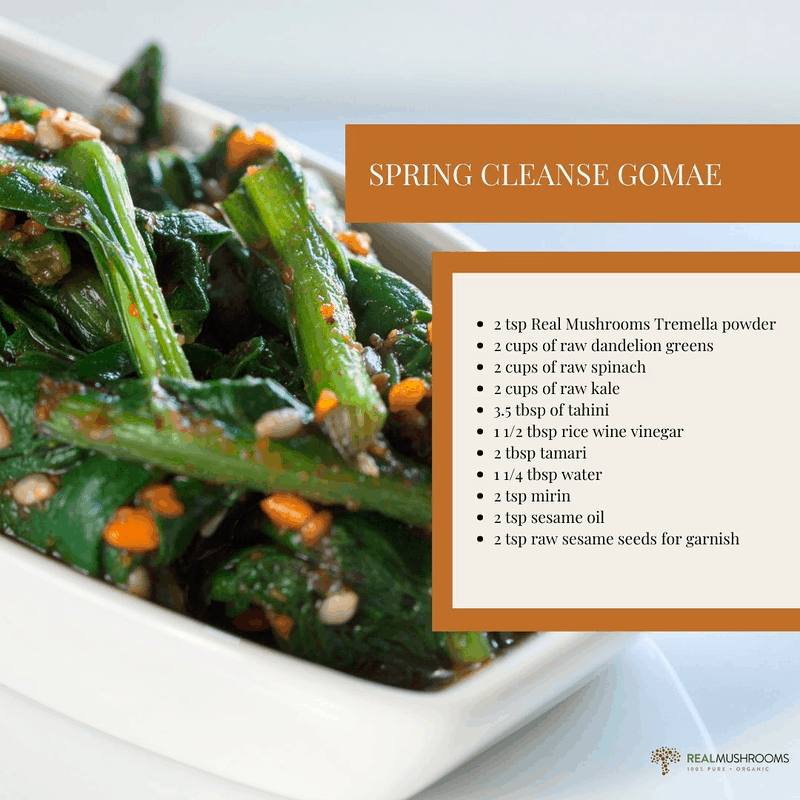
Like these mushroom recipes? Download our Real Mushrooms Recipe Book to inspire the use of more power-packed, delicious mushroom recipes in your kitchen!

Valentine’s Day—a time when love is in the air. It is a time to celebrate affection, romance, and friendship—for all things sexy, sweet, and mushrooms.
Wait, mushrooms?!
That’s right, mushrooms! Mushrooms in Chaga Powder and Turkey Tail Powder can indeed be sexy! Especially when they’re rolled into decadent Chocolate Truffles. Besides, what makes a better treat or gift than something that tastes sinful but contains superfood ingredients to keep you healthy?
If you’re still scratching your head trying to figure out how mushrooms are sexy, let’s break it down.
Nobody wants to have gut issues or the sniffles, especially on their special, romantic, fun night.
That’s where these mushrooms shine, particularly when you consume a small amount of them daily. Chaga swoops in for digestive support and gut health, and Turkey Tail supports that essential immune function.
The bottom line is these allies help you feel your very best. And when you’re feeling your very best, you feel your most sexy, right? You feel your most confident and thriving. And that’s what we’re striving to help you feel!
The great news is that these easy, paleo, vegan, no-bake truffles have both mushroom allies.
And just like you want the real deal, authenticity in your partner and friends, you’re looking for the same in your mushrooms. That’s where Real Mushrooms has your back with their 100% organic mushroom extracts with no added grain, starch, or fillers - so you know you’re getting all the beneficial compounds, like beta-glucans.
They truly are your friends with benefits.
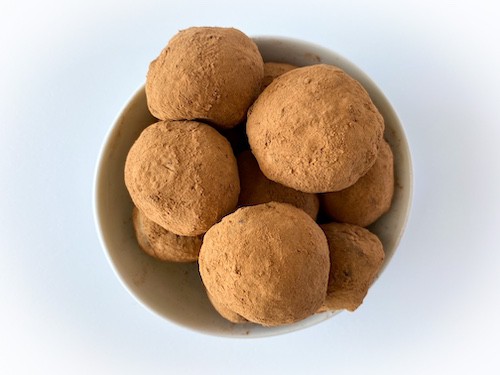
Besides the Chaga and Turkey Tail mushroom extract powders, the other ingredients you’ll need are:
The good news is these no-bake, paleo, and vegan mushroom chocolate truffles come together effortlessly and easily.
Let’s break down the recipe:
That’s it! Most of the time, the batter is in the refrigerator firming up, so you can attend other fun Valentine’s Day festivities.
These chocolate mushroom truffles will last up to four days in the refrigerator. They’re best stored in an airtight glass container. Alternatively, you can freeze them for a longer shelf life.
Yields: 10-12 large truffles
Cook Time: 20 minutes
Total Time: 1 hour 20 minutes (an hour of which is refrigeration)
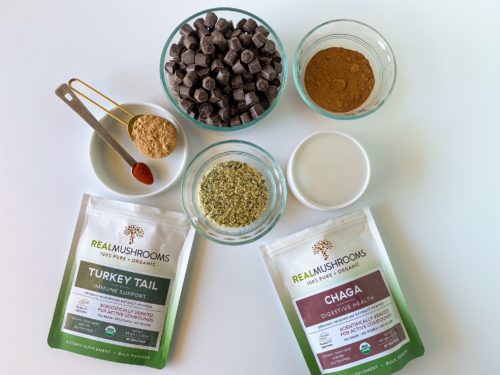
When chocolate meets gut and immune health, it’s always time to celebrate, making these the perfect treat to honor you and all your loved ones. And not just on Valentine’s Day, but every day!
We can’t think of a tastier way to celebrate love, health, and community.
So head to the kitchen, use those health-boosting mushroom powders, and here’s to a day and season filled with all things love, health, friends, and family.
You can create many culinary combinations with mushrooms – you can even crack eggs into your favorite mushroom omelet or desserts like these truffles! You don’t have to use Chaga or Turkey Tail for this recipe - you can easily substitute it with your favorite mushroom extracts. Each has its unique profile and benefits.
You can read our article highlighting the top 7 benefits of the main functional mushrooms. These different mushroom extracts can easily be added to whatever you cook in the kitchen.
Join the mushroom recipe challenge! Get creative in the kitchen with different ways to get more mushrooms in your diet. Invent your recipe, share it via Instagram, and tag us @realmushrooms for a chance to be featured.
How to relive your childhood: Step one: grab a glass of milk. Step two: grab the Oreos. Step three: dunk and enjoy!
How to relive your childhood with a health twist:
Step one - grab the Real Mushrooms Chaga.
Step two - make homemade Oreo cookies.
Step three - enjoy good immune, brain, digestive and skin health!
No matter if you were the kid who licked all the icing off first, dunked them whole in a glass of milk, or dipped them in peanut butter, the chocolatey, crunchy satisfaction of Oreo cookies is hard to beat.
So we took all that satisfaction and put a Real Mushrooms health twist on it using blanched almond flour, organic powdered sugar, and Chaga Mushrooms. We want you to enjoy healthy homemade Oreos and maintain good digestive (and skin) health!
So, how do Oreos and health fit in the same sentence? First, we swap all the processed ingredients for healthy, whole-food ones. Next, we add a big antioxidant punch—a punch that comes in the form of Chaga Mushroom.
Chaga is rich in antioxidants and supports immune function. It also aids digestion and helps revitalize skin (thanks to its high amounts of melanin).
As always, we don’t advocate baking with overly processed foods and unnecessary ingredients, and we would never offer processed mushroom extracts with unnecessary starch and fillers.
We only offer 100% organic mushroom extracts because we want you to enjoy and experience the full health benefits of functional mushrooms.
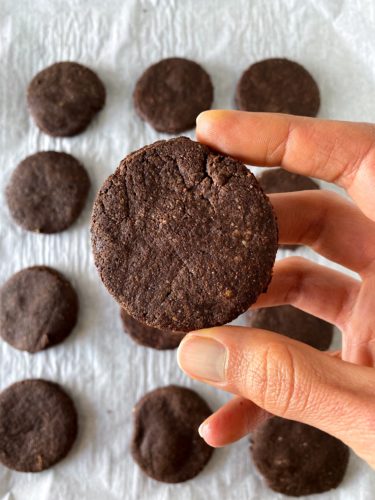
Servings: 6 cookie sandwiches
Prep time: 20 minutes
Total Time: 30-32 minutes
*Notes
- If you don’t want to use protein powder, you can replace the protein powder with almond flour and add 2-4 TB of your favorite granulated sweetener. Taste and adjust to your sweetness preference.
- If you are using unsweetened protein powder, add 2-4 TB of your favorite granulated sweetener. Taste and adjust to your sweetness preference.
It’s all too easy to get caught up in the seriousness of life. In the strict habits. In the “go, go, go” mentality. Too many things on the never-ending to-do list. And with all that busyness comes a lot of stress on your immune, brain, and digestive health.
So sometimes, we all could use a reminder of our childhood, a reminder to invite a little more play, a little more silliness, and a little more freedom into our routine. It’s okay not to take life so seriously all the time. It’s okay to take breaks.
It’s okay to enjoy treats while still keeping your health in mind, like these dairy-free, homemade paleo Oreo cookies. Remember to take breaks, breathe, and invite a little silliness into life with these healthy Oreos.
Also, don’t forget to leave your required recipe ratings to let others know how much you loved these cookies, and check the review recipe section for tips!

If you don’t want to use Chaga, you can easily try out another mushroom powder extract. There are wonderful options, each with its own unique profiles and benefits. To learn more, you can read our article highlighting the top 7 benefits of the main functional mushrooms. These different mushroom extracts can easily be added to whatever you’re cooking up in the kitchen.
Join the mushroom recipe challenge! Get creative in the kitchen with different ways to get more mushrooms in your diet. Invent your recipe, share it via Instagram, and tag us @realmushrooms.
We’ve compiled 9 crowd-favorite vegetarian recipes for simple but comforting meals to help you stay satisfied and healthy through the season. These meals, drinks, and snacks are packed with beneficial superfood ingredients, including our organic mushroom extracts to help support cognition, energy, and immune system function.
Each year, during the change of seasons, our immune systems can dip, as can our mood and energy levels. These functional mushroom-enhanced vegetarian winter recipes can help keep you on top of your game, whether it's a cold winter night or a chilly morning.
In This Article
The golden milk trend is here to stay and we couldn’t be happier. From the anti-inflammatory properties of turmeric to it’s earthy yet sweet flavor, this rhizome continues to be a fan favorite. We’ve created two versions: one for the morning and the other for evenings.
Which do you prefer?
We have two amazing spiced pumpkin pie latte recipes: a traditional hot latte and a cold smoothie adaptation!
Of course, our Pumpkin Spice Latte withholds the artificial ingredients, flavors, preservatives, starches, and fillers and adds an extra dose of immune-boosting Turkey Tail mushroom extract.
This second recipe is prepared as a cold smoothie, but it’s delicious and warmed up for an elixir-style beverage! If you don’t have the pre-made cold brew, you can make your own by adding any traditional “pumpkin spice” blend to your coffee.
Add coconut milk for a creamy, satisfying texture for the smoothie version. You can also sprinkle with chilli flakes for a unique kick!
In certain traditions, a chai spice recipe is passed down between generations within a family. Families have their own variations, often seasoned with ingredients like lemon zest or orange juice for enhanced flavor, often kept as a “family secret.”
We created a special Chaga Chai Latte and we’d like to pass it on from our family to yours!
Once you open your pumpkin puree can for the aforementioned Pumpkin Spice Latte, you can use the extra puree to make these simple Pumpkin Pie Spice Protein Bars. These bars are made with just a touch of sweetener to elevate the spices, so you don’t have to worry about a sugar crash!
The mushroom of choice for this recipe is Lion’s Mane, though we’ve enjoyed others such as Reishi and Chaga. Sprinkle with sesame seeds for a pleasant crunch.
These cinnamon “sugar” warm bites of love are a perfect winter weekend treat. As always, we’ve incorporated a Real Mushrooms extract powder into the recipe: Lion’s Mane. Serve warm with a dollop of sour cream for a tangy contrast!
Known to support healthy neurons and brain cell communication, Lion’s Mane is commonly referred to as the “focus and brain” mushroom.[3] Bake a double batch and keep extras in the fridge for an easy weekday morning snack!
Get the full recipe here or watch the video below:
It’s a classic winter combo, peppermint chocolate, with a fun twist. The bold flavors of chocolate, peppermint, and Real Mushrooms’ 5 Defenders Powder mix beautifully with the sweet potatoes. It’s a guilt-free dessert that even meat eaters will love.
Perfect as a special holiday dessert or even as a random act of self-love! This Peppermint Chocolate Sweet Potato cake is a guilt-free delight.

As it gets darker earlier in the day, it’s nice to have something warm but simple for dinner. This oven-baked mushroom dish, including cooking time, is ready in under 45 minutes. It pairs wonderfully with roasted brussels sprouts and a side of brown rice for a hearty spread.
It’s as simple as:
Some things are classics for a reason, and a good butternut squash soup is no exception. Fall harvests bring bounties of seasonal vegetables, like squash, perfect for warming you up on cold weather days. Add basil leaves and a squeeze of lime juice for a fresh finishing touch.
Now is also the time to double-down on protecting our immune systems from colds and flus. This soup is a warm and comforting way to get the health benefits of mushrooms by not only adding functional mushroom extracts but by using a base of mushroom broth. After you watch the video below, you can find the full recipe details here.
The complex, full flavor of this Chaga enhanced mole recipe is worth every ingredient on the list. Think something like tomato sauce, black beans, and roasted green beans brought together with a touch of cacao alongside earthy spices like cumin. Garnish with coriander leaves and a sprinkle of crunchy hazelnuts for an elevated flair.
A good sauce can be a flavor game-changer, and this easy, 20-minute mole delivers just that! It pairs Real Mushrooms Chaga Powder with a touch of cacao for depth and warmth from the chili and cumin powder. It’s great on all types of proteins, vegetables, and, of course, mushrooms!
By the way, if you’re wondering if heat affects the efficacy of your mushrooms in these recipes (it doesn’t), check out our in-depth guide to dual extraction.
As always, we are fully transparent in our supply chain and ensure the highest possible quality. We are also very passionate about sharing and educating every chance we get. We aim to supply the very best in an easy-to-use way because we believe in your worth, value, time, and money.
We hope these functional mushroom-infused recipes can give you a boost this fall and winter. Our organic, fruiting body mushroom extracts can be used in a variety of ways, not only in the recipes above! Follow us on Instagram @realmushrooms to see how other Real Mushrooms fans use their extracts!
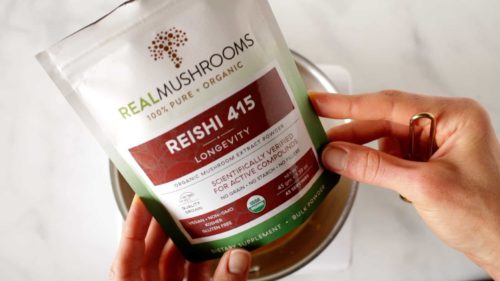
In This Article
With plenty of articles out there touting the magic of chaga, we decided to focus on many of the unknown aspects or myths about it. What is Chaga? It is a very unique parasitic fungus, which is much different from the other mushrooms you know and love.
In the late 1990s, Chaga mushrooms were virtually unknown as a dietary supplement, with the exception of Russia and a few countries in Southeast Asia. Now, in today’s world, many circles highly regard Chaga as a potent super food.
So let’s jump right in and reveal 9 things you didn’t know about Chaga.
If you'd prefer to get your Chaga facts from the mouth of Real Mushrooms' Chief Funguy, Skye Chilton, take a look at the video below:
So, what exactly is Chaga, you ask?
Chaga is the common name for a perennial canker or sterile conk that commonly forms on birch tree trunks (Betula papyrifera, paper birch) after it has been infected and colonized by the mycelia of the pathogenic fungus Inonotus obliquus. The part of this fungus that one harvests is the outward manifestation of the fungal disease.
Common names for Chaga include clinker polypore, tinder conk, cinder conk, or birch canker polypore (not to be confused with birch polypore - Fomitopsis betulina). In British Columbia, Inonotus obliquus is classified as a tree disease.

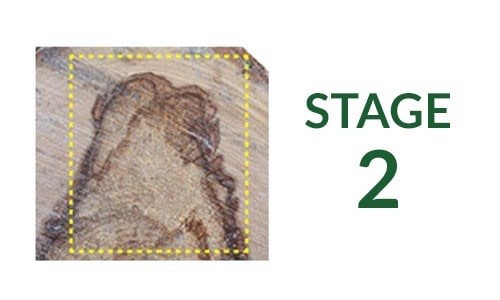

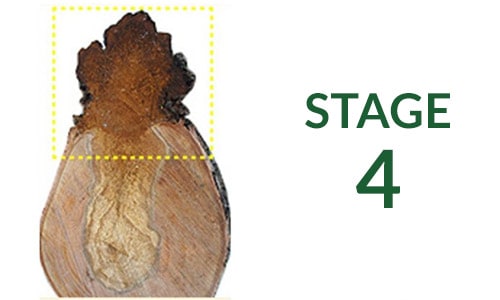
What we call ‘Chaga’ is the dense black mass that can be seen on the exterior of trees (almost exclusively on birch trees) infected with the fungus Inonotus obliquus. It's not a mushroom (fruiting body) but a dense sterile mass of decayed bits of birch tissue with mycelia incorporated.
When chopped from the birch tree, the interior has a rusty yellow-brown color, is somewhat granular in appearance, and is often mottled with whitish or cream-colored veins. Chaga can be referred to as a sclerotium, which is a dense mass of mycelium, but this is technically incorrect as Chaga is not pure mycelium.
Research is needed to fully understand the exact composition of Chaga. One research paper estimated Chaga to be only around 10% mycelium based on microscopic observation. A more accurate term for Chaga is conk or canker or just plain old Chaga.
The exterior canker that is harvested should not be confused with the actual fertile mushroom (fruiting body), which normally forms under the partially detached bark on dead-standing or fallen trees.
This fruiting body is a greyish, flat thin-layered mass, up to 3-4 meters long and 40-50 cm wide, with downward cascading pores, which are the spore-producing layer of polypore fungi.
 The bark has peeled away, revealing the porous fruiting body. ©Terhi Joki, KÄÄPÄ Biotech, Finland.
The bark has peeled away, revealing the porous fruiting body. ©Terhi Joki, KÄÄPÄ Biotech, Finland.
Chaga is a slow-growing fungus that primarily grows on birch trees. It is commonly found in the boreal forest regions of the Northern Hemisphere like in Russia, Korea, Eastern and Northern Europe, Northern areas of the United States and Alaska, Canada, and Northern China.
Typically, one finds well-developed Chaga sclerotia on trees over 40 years of age, but the infection starts earlier. The period from initial infection to tree death varies with the number of infection sites and tree resistance but is typically around 20 years. After about 3-5 years of growth, the Chaga begins to reach a harvestable size.
The harvested dark black conk consists primarily of wood lignans from the host tree and mycelium of the invasive fungus. Due to this, when Chaga grows on birch, it will also contain birch compounds like betulin and betulinic acid [4].
After harvesting, dried Chaga can regrow to harvestable size again in three to ten years, and this can be repeated until the tree dies. Chopping off the dry Chaga does not kill the organism, and the mycelium is still inside the tree, slowly consuming it.
Chaga is not technically a perennial by definition; it may live for years as it consumes its food source, but once that source is exhausted, it will then die for lack of nutrients.
Russians have known about Chaga’s health benefits for a long time; the word ‘Chaga‘ is a derivative from ‘чага‘, which is the old Russian word for mushroom. A healing plant of renowned value throughout the world, Chaga is thought to be a potent immune-stimulating functional mushroom.
In fact, the first verifiable mentions of Chaga were from the early 16th century. Chaga is documented in folk and botanical remedies throughout Eastern Europe. Traditionally, consuming Chaga may help with stomach discomfort and overall digestive health [1].
Chaga became popular in the West after it was mentioned in the book Cancer Ward by Nobel Prize-winning Russian author Aleksandr Solzhenitsyn. In the book, he notes that poorer people saved money on tea by brewing Chaga.
As early as 1955, a Chaga extract known as Befungin (Russian translation) has been sold in Russia to treat stomach and intestinal ailments.
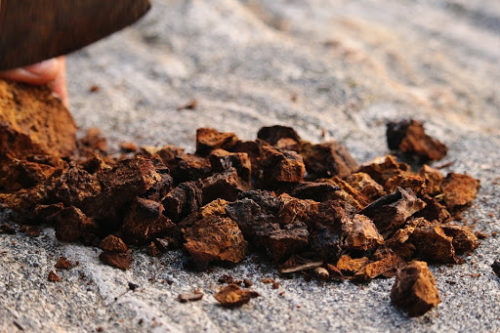 Smaller chunks of chaga cut from a larger piece.
Smaller chunks of chaga cut from a larger piece.
Chaga also contains melanin, concentrated in the black outer crust, which is a complex compound that gives the skin, hair and the iris (colored part of the eye) their color. Our skin naturally darkens in response to sun exposure which stimulates melanocytes to produce melanin.
Considered a potent source of melanin, Chaga may help protect the skin and hair from sun damage. Melanins have a role in DNA repair, mitochondria health, cell metabolism, and protection from light and radiation.
In particular, melanins from mushrooms exhibit a healthy inflammation response based on their antioxidants and gene-protecting properties. Melanins can decrease oxidation of fatty acids and damage of membranes creating lots of potential for skin health [8, 9].
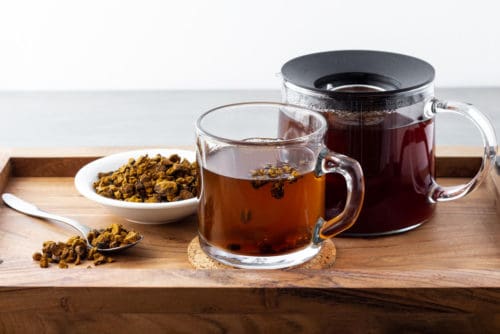
Often, Chaga is compared to coffee with its robust flavor and dark color. It’s earthy, slightly bitter, and has a small hint of forest sweetness. Luckily, if you are sensitive to caffeine, Chaga is a great alternative to coffee as it’s caffeine-free, so it won’t keep you awake and it’s just as tasty!
In Finland, during WW2, there was a coffee shortage, and substitutes started popping up, many of which were based on roasted rye [3]. It was then that Chaga emerged as an ideal coffee substitute known as Tikka Te.
Chaga Coffee (which is really more like a tea) is a great and simple way to consume Chaga. You can buy the wild chunks from a reputable source to brew your own magical concoction.
But if you’re just looking for a quick and easy way to add Chaga to your diet, we’ve made it simpler for you to consume with our amazing Chaga capsules.
We use a hot water extraction method made from our pure source of wild-harvested Chaga from Siberia. Take two of these capsules daily over a three-month period to feel the full health benefits.
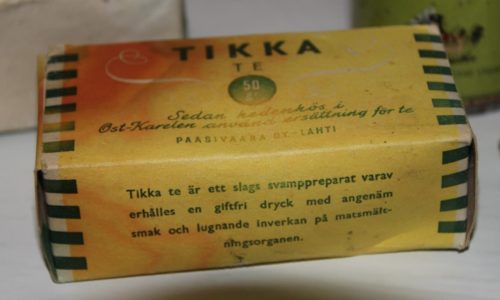
Many argue that wild harvesting of Chaga is not sustainable, and we need to be wary of overconsumption of this fungi.
In 2004, David Pilz, Forestry Mycologist at Oregon State University, went to Russia to report on whether Chaga harvesting in Russia was sustainable or not [5]. This is the most detailed report of Chaga harvesting currently available. The report determined that the “biological Chaga resource is immense, and unlikely to be over-harvested to the detriment of the species Inonotus obliquus any time in the near future.” According to the report, Chaga is excessively abundant, even with over-harvesting estimates.
The report states that Chaga infects upwards of 20% of all birch trees in Russia. This is in stark contrast to some claims on the internet that Chaga is extremely rare and only found on 1 in every 10,000-20,000 birch trees.
Similar to Russia, Scandinavia has vast boreal forests. Luke, The Natural Resources Institute Finland, estimates that Chaga infects 6-30% of all birch in Sweden and Finland [4].
Given similar estimates between Russia, Finland, and Sweden, it would be safe to assume that Canada also has vast amounts of Chaga in its boreal forest regions.
The Pilz report did make an important note about proximity to Chaga. While the resource is vastly abundant, how far harvesters need to travel in order to find chaga will have a direct impact on the selling price. Popular harvesting areas may get over-harvested and lead people to believe that this fungus is threatened.
In the future, there may be a tipping point at which the cost of harvesting becomes too expensive for supplements but given the vast amounts of Chaga available, this turning point would be well before there was any threat to the species itself.
An important note is that harvesting Chaga does not kill the organism itself. The mycelium is still inside the tree, slowly consuming it.
Near or after the tree’s death, the mycelium will begin to produce the mushroom (fruiting body) so that spores can be released and the organism can reproduce. Chaga harvesting does not impact the organism's ability to reproduce.
Since the harvested part of the Chaga is actually a woody canker and not a mushroom in the traditional sense, it begs the question: Does Chaga have a fruiting body?
Yes, it does, but we rarely see it.
The actual mushroom (fruiting body) forms under the bark of dead-standing or fallen trees. After the tree dies, the bark slowly separates from the tree, revealing the sporocarp (fruiting body). This mushroom (fruiting body) is a greyish, flat thin layered porous mass with downward cascading pores.
When the conditions are correct, the pore layer will begin to release spores which will get blown around in the wind and eventually end up on weakened birch trees and the infection process will start over.
Insects also like to eat the mushroom which helps to transport the spores to new areas.

Cultivated Chaga can and will have a different composition and therapeutic properties, depending on the conditions under which it grows (different types of substrate, environmental conditions, etc.)
This is because a lab can only cultivate the mycelium and not cultivate the canker or sclerotium itself.
Wild Chaga takes three to five years before it can be harvested, and many of the special compounds in Chaga, like betulin and betulinic acid, come from the birch tree. If no birch tree is involved, like a lab-grown process, then none of these important birch compounds will be present.
No black outer layer, no melanin. Not to mention that lab-grown Chaga is myceliated grain so there will be a large concentration of grain in the final product as opposed to the actual Chaga canker.
Luckily, our Siberian Chaga is wild-harvested and tested by 3rd party laboratories for active compounds like beta-D-glucans that are quintessential nutrients for the immune system. This wild Chaga has been maturing for upwards of 20 years in the cold and wild boreal forests. Siberian Chaga contains many polysaccharides, triterpenoids, and melanin which is a pigment we need throughout the human body.
We care deeply about sourcing the highest quality mushrooms that contain the most functional compounds to support your health over long term use. It is recommended that adults take two capsules of our organic Chaga daily.
The bushcraft and survivalist communities use Chaga as a fire starter. Once dried, the inner brown section of chaga can take a spark, and it is very slow burning making it ideal as starting coal for your fire.
Fire pistons, which compresses air to create heat to ignite your starting coal, can also make use of Chaga.
You’ve just learned that:
At Real Mushrooms, we pride ourselves on our product quality, as we know products on the market today aren’t always what they seem. We offer transparency with our sourcing, processing, and ingredients.
We always use 100% mushroom extracts made with no grain or filler, created with ethics and purity, to assist in bringing optimum health to your life.
If you’d like to understand the extraction methods for mushrooms click here. This article explores whether dual extraction is necessary.
How did you enjoy the article? Did you learn anything new? Please tell us your special experiences with Chaga in the comments below!
It's one of our team's favorites!
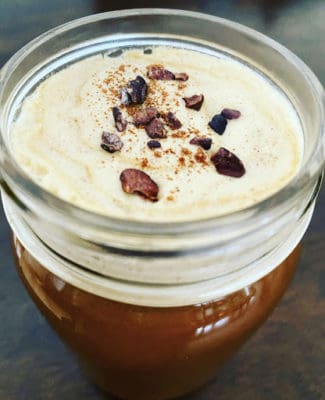
Directions: Bring all of these ingredients to a simmer on the stovetop, serve, and enjoy a cup of Chaga! Add a few cacao nibs at the end for an added crunch. This will give you a super boost of nutrients and energy!
For more recipes like this, be sure to visit our mushroom recipe section of the blog.
There are so many ways to incorporate this superfood into your daily regime. Add our Chaga powder to your smoothies, and oatmeal, as an added nutrient to your morning coffee or tea, or even into your raw desserts.
All the comforting taste of a homemade chai latte, with health-boosting Chaga mushroom extract, in an easy chai latte recipe that takes just 5 minutes.
Sweet, spicy, nourishing comfort. What’s not to love in a Chai Latte?
We decided to take that love even further and bring you a healthy homemade Chai Latte recipe that is easy, gut-friendly, dairy-free and boosted with Chaga Mushroom.
You end up with a Chai Latte that nourishes your gut while also nourishing your pleasure senses.
Let’s dive into the details.
This simple Chai Latte recipe is not only pleasurable to drink, but while you’re sipping away, it’s also providing you with the nutritional serving of key nutrients your gut needs to optimize its health.
In fact, the unique components of Chaga actually help to improve the number of your beneficial gut bugs while limiting the number of pathogenic ones.
Besides acting as a prebiotic food source for your gut microbiome, the immense load of antioxidants in Chaga can further benefit your gut health. This is due to the fact that antioxidants can help to reduce inflammation, and inflammation in the gut is the root of various digestive complaints.
Anti-inflammatory - check.
Gut health - check.
Pleasurable to drink - check.
Easy to make - check.
Did we miss anything? Oh yes. This particular recipe does not contain weird preservatives, additives, or heavy doses of refined sugar that are often found in coffee house or coffee shop Chai Lattes.
And that’s a healthy trend we like. So, in that same boat, our Real Mushrooms Chaga (as with all our products) is made with absolutely no preservatives, additives, starches, or fillers that are often found in powdered mushroom extracts.
All that to say, this healthy Chai Latte ticks all the boxes, making it a nourishing, comforting drink to weave into your everyday routine.
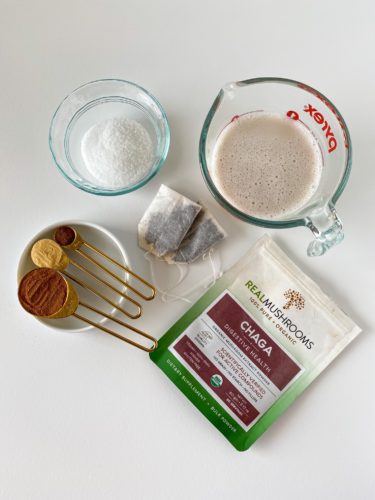
Servings: 2
Cook Time: 5 minutes
*If you’re trying to avoid caffeine, you can use decaf black tea or just leave the tea out altogether and skip step 2.
** For the iced version, let the brewed chai completely cool and pour over a glass of ice.
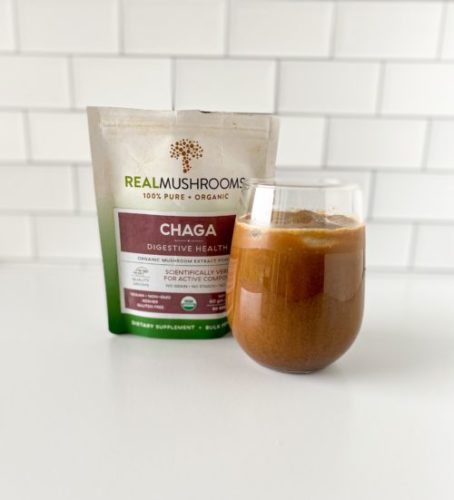
Never underestimate the power of the simple pleasure found in sipping a nourishing beverage, especially when the beverage is loaded with health-boosting ingredients.
But, the only caveat is, you have to actually slow down enough to appreciate the nourishment.
Yes, this is an incredibly easy recipe that comes together in 5 minutes, but that just leaves more time for you to hit the pause button and enjoy drinking it.
Smell the sweet and spicy aroma, breathe, and take some time out of the hustle and bustle of your schedule - just for yourself, to be with your thoughts, your breath, and your beverage.
P.S. It’s especially enjoyable sipping out in nature.
If you don’t want to use Chaga, you can easily try out one of our other functional mushroom extracts. There are wonderful options, each with its own unique profiles and benefits. To learn more, you can read our article which highlights the top 7 benefits of the main functional mushrooms. These different mushroom extracts can easily be added to whatever you’re cooking up in the kitchen.
Join the mushroom recipe challenge! Get creative in the kitchen with different ways to get more mushrooms in your diet. Invent your recipe and share it via Instagram on @realmushrooms. We will feature the winner’s recipe on the blog & give you a coupon for any Real Mushroom product of your choice!
SHOP MUSHROOMS!A recipe for an easy paleo mole sauce that tastes like it’s been simmering all day, done in 20 minutes, and boosted with health benefits from Chaga Mushroom extract.
A good sauce can be a game-changer to flavor up food, and a good dose of Chaga Mushroom extract can be a game-changer to boost up your health. So we thought, why not pair the two together!
Thus we bring you not just any mole sauce, but an easy-to-make, paleo, Chaga mole sauce that's not only delicious but anti-inflammatory and gut-nourishing too.
If you’ve enjoyed a lot of traditional Mexican cuisine and tasted a rich sauce that smells a bit like chocolate and tastes a bit spicy, smoky, nutty, and earthy-sweet - that’s the mole sauce! There are different types of mole sauce (not all contain chocolate), each with their own individual flavor profiles and ingredients, but they usually all contain a fruit, chili pepper, nuts or seeds, and particular spices.
So we combined all the traditional elements and added a dose of Real Mushrooms Chaga to boost the nutrition even more.
One of the benefits of Real Mushrooms 100% organic mushroom extract powders is the ease and versatility of consuming them. They can easily be added to baked treats, cooked dishes, beverages, and yes, sauces!
The other benefit of Real Mushrooms extracts is that you’re also getting a high dose of nutrition and health benefits, with no added starch or fillers (that are often found in mushroom products).
For example, in this mole sauce, you’re getting a dose of digestive, skin, immune, brain, and liver support from the 100% Chaga extract. Due to its high concentration of antioxidants, Chaga helps make this sauce a tasty and medicinal go-to that you can enjoy over your veggies, protein, and so much more.

Bonus: Chaga pairs very well with chocolate. And it’s not only the taste that pairs well, the chocolate actually helps your body absorb the Chaga more efficiently due to the fact that cacao is a vasodilator ( it widens your blood vessels). Win, win!
The options are endless for how you can use the sauce. The fun part is being creative in your kitchen, but we’ll include some ideas to get you started.
Put it over:
Feel free to experiment and come up with the perfect sauce that’s to your liking. For example, if very spicy foods aren’t your thing, feel free to omit the jalapeño altogether. And if you want a bit of a sweet sauce, feel free to add some honey or your favorite sweetener to the mix.
You can refrigerate leftovers in an airtight container for 4-5 days or freeze for up to 3 months.
Servings: about 2 ½ cups
Prep Time: 5 minutes
Cook Time: 20 minutes
Total Time: 25 minutes
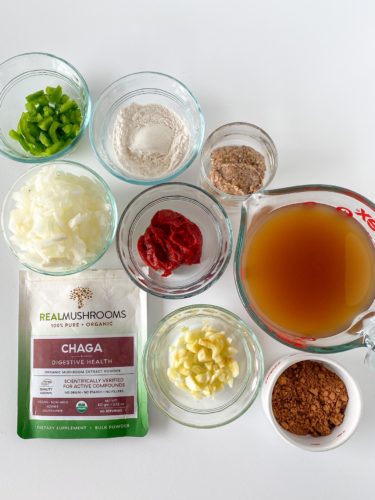
Traditionally, mole sauce is quite the labor-intensive recipe to make, but we threw in some shortcuts to make it a bit more manageable for those that don’t have hours to spend in the kitchen.
We also threw in some Chaga Mushroom extract to help bring in some anti-inflammatory, brain, immune, gut, and liver support.
As to how you enjoy it, that’s up to you! We love to encourage our readers to get creative in the kitchen. It’s a fun way to connect with your food, to connect with your senses, and to connect with yourself.
So have fun with it and we’d love to see your creativity!
If you don’t want to use Chaga, you can easily try out another functional mushroom extract. There are wonderful options, each with their own unique profiles and benefits. To learn more, you can read our article which highlights the top 7 benefits of the main medicinal mushrooms. These different mushroom extracts can easily be added to whatever you’re cooking up in the kitchen.
Join the mushroom recipe challenge! Get creative in the kitchen with different ways to get more mushrooms in your diet. Invent your own recipe and share via insta @realmushrooms. We will feature the winner’s recipe on the blog & give you a coupon for any Real Mushroom product of your choice!
SHOP MUSHROOMS!Our version of this internet-trending whipped coffee recipe comes with a skin-rejuvenating, antioxidant-boosting, immune system-regulating, and happy-digesting twist! This Dalgona coffee recipe uses one of our favorite mushroom powder extracts: Chaga.
Maybe you’ve seen morning coffee trends like Dalgona sweeping the web (I mean, who hasn’t?). Maybe you’ve wanted to try it but don’t want the jolt of jitteriness, acidity, and digestive consequences that can follow coffee drink consumption. Or perhaps you’ve been searching for a healthier version to try.
Or maybe you’ve been enjoying this treat as a daily quarantine staple to replace your love of fancy coffee store beverages.
Whatever coffee boat you’re in, Real Mushrooms’ Dalgona Mushroom Coffee (vegan and paleo) will be sure to please. You get all of the delicious factors with the added health benefits of the functional mushroom known as chaga while lessening the wiry coffee sensation.
Let’s talk chaga. Specifically, let’s talk about chaga’s ability to help offset some of the possible downsides of drinking coffee: indigestion, gut irritation, and increased stress and anxiety.
Chaga has the unique ability to nurture and help grow beneficial bacteria in your gut microbiome. It does this because it’s loaded with prebiotics and polysaccharides. When those beneficial bacteria are nourished, they can do what they do best—help you and your digestion in top-notch condition.
Not only that, but when digestion runs more smoothly, skin tends to look smoother, too. As a bonus, chaga, like the other mushroom extracts in our lineup, helps to support the immune system.
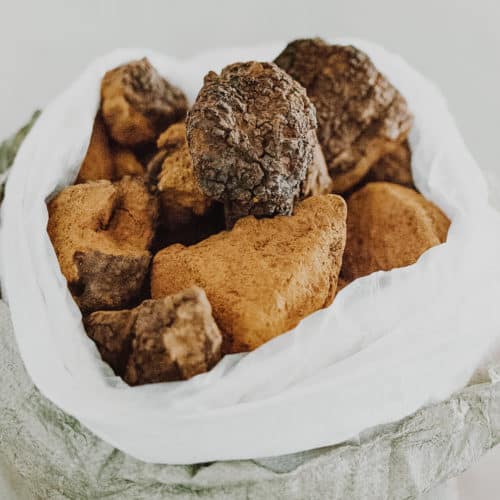
So, chaga rejuvenates not only your digestion but also your skin. And you know what else is great for skin health? Antioxidants and melanin! Antioxidants can help protect your skin by limiting the production of skin-damaging free radicals, and chaga is rich in them.
Melanin, which is concentrated in the outer black layer of Chaga, is also beneficial for skin health. Gut health, skin health—check, check! Now, onto the big whopper of stress.

Drinking coffee, for some, can make stress management more difficult —so let’s talk about the word adaptogen. Now, the world of adaptogens is as trendy as Dalgona Coffee—and Chaga is indeed an adaptogen.
If you get quality-grown functional mushrooms with no added fillers like starch, mycelium, or grain of any kind—we’re talking 100% organic mushroom extract, then this adaptogenic fungi can indeed be a wonderful and beneficial addition to your diet. While certainly not being a cure-all, they can live up to the hype.
As such, taking on its adaptogenic role in the Dalgona Mushroom Coffee, Chaga can naturally support your adrenals. Happy adrenals = happy life, or rather the ability to live a thriving life where you can naturally adapt to life’s stressors.
Here at Real Mushrooms, we only offer 100% wildcrafted Siberian Chaga that contains all its non-water soluble components, so you experience that maximum adaptogenic potency.
Depending on your genetic factors and lifestyle, you may have no problem metabolizing the caffeine in coffee. That’s great! But, for the rest of us, the addition of Chaga to our coffee might be an idea worth your time.
And even if you do great with coffee, then Chaga in your daily morning beverage would still be worth it for all of the health benefits mentioned above. And what better way to try it out then to enjoy the latest Internet sensation: Dalgona Coffee.
Servings: 1
Prep Time: 5-7 minutes
Cook Time: 0
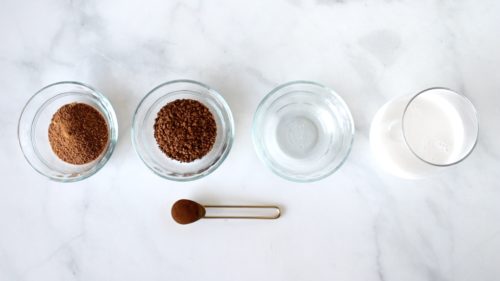
Let’s face it—life can feel like a roller coaster, with unpredictable turns that make your stomach drop and give you whiplash. The solution? Whipped Chaga Coffee, of course!
Ok, all jokes aside. Truthfully, life won’t slow down, but how you approach it can. There’s so much to digest in the world, apart from what you put into your mouth. Emotions. Thoughts. Uncontrollable circumstances.
But you have the amazing power of free will. You can choose how to show up to life’s ride, you can choose what thoughts you want to believe, and you can choose what foods you put into your body.
And we, as a mission-focused company, fully believe that you deserve the best—we believe in providing you with real, powerful ingredients like organic functional mushrooms that can help support you on that roller coaster ride, make it a little less bumpy, help you adapt to those unpredictable turns a bit better, and offset the ride's stressful impact, as adaptogens like Chaga can do.
So, take a moment to just be—still. Sip your Dalgona Mushroom Coffee, choose how you want to show up in the world, choose beneficial thoughts, and choose beneficial foods.
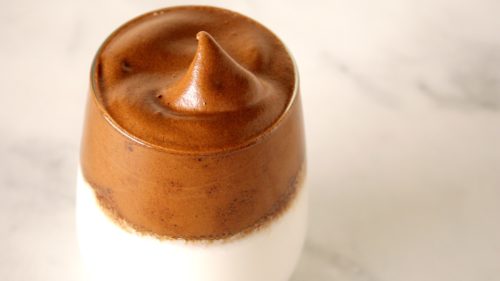 Try any of our mushroom extracts in a Dalgona Coffee creation of your own!
Try any of our mushroom extracts in a Dalgona Coffee creation of your own!
The Internet is flooded with those dreamy pictures of Dalgona Coffee, and we at Real Mushrooms would love to see your unique spin on it! If you don’t want to use Chaga, try another functional mushroom.
There are wonderful options, each with its own unique profile and benefits. To learn more, read our article highlighting the top 7 benefits of the main functional mushrooms.
Bottom line: Just have fun, get creative, and show off your work!
Join the mushroom recipe challenge! Get creative in the kitchen with different ways to get more mushrooms in your diet. Invent your own delicious recipe, share it via Instagram, and tag us at @realmushrooms. We will feature the winner’s recipe on the blog & give you a coupon for any Real Mushroom product of your choice!

DIY mushroom coffee is an easy way to support your body’s functions while enjoying a beloved beverage. This is why brewing the right mushroom coffee recipe will be essential to a healthier lifestyle.
Functional mushrooms have a variety of nutritional benefits, whether they’re taken in dried mushrooms or mushroom powder form. These benefits include supporting the immune and nervous systems, increasing energy, helping maintain even blood sugar levels, and supporting brain health and cognition.
However, the health benefits of mushrooms can be diminished if there are unnecessary fillers present in the supplement like what we see with myceliated grain.
Many supplement companies sell functional mushroom products made from myceliated grain, a precursor to the mushroom (fruiting body). The mycelium (the “roots” of the mushroom) is grown on a grain substrate.
The result is a product high in grain starch and lacking many of the compounds these fungi are famous for. Supplements made from myceliated grain contain between 35-60% starch instead of beneficial fungal matter.
Several studies conclude that absent the fruiting body, what is commonly and simply known as the ‘mushroom’, the beneficial compounds in a mycelium-based supplement may be severely diminished. This is because the highest concentrations of health-supporting beta-glucans are found in the fruiting body as opposed to the mycelium.
The starch serves as nothing more than a filler and dilutes the beneficial compounds you get in your mushroom powder for coffee. You can learn more about how myceliated grain is grown and why it's not ideal for supplements.
By contrast, the organic mushroom extracts at Real Mushrooms are made from certified 100% organic mushrooms with no grain fillers. Using Real Mushrooms powder means getting a mushroom extract with some of the highest concentrations of active nutritional compounds on the market. This means you get real health benefits by adding Real Mushrooms power to your cup of mushroom-infused coffee.
Mushroom Coffee Blends: You can get the beneficial compounds of functional mushroom powders by mixing a spoonful or two into your freshly bewed coffee. On the other hand, you can purchase our Real Mushrooms Functional Dairy Creamer Powder to add to your DIY mushroom coffee.
 Photo credit: @smailer
Photo credit: @smailer
Ultimately, adding Real Mushrooms’ extracts through our mushroom powder products to your freshly brewed coffee will be better in flavor and nutritional quality than adding pre-made dietary mushroom packets to an instant coffee mix.
With full control over your beverage, you can adjust the quantity of extract and know exactly what you are getting. You can then guarantee you are getting a supplement that is NOT diluted with fillers.
Finally, buying in bulk tends to be more cost-effective and friendlier to the environment.
There are five distinct advantages to DIY mushroom coffee:
Here are eleven mushroom-infused coffee recipes that offer an easy way to incorporate the benefits of functional mushrooms into your daily diet.
If you’re new to the mushroom powder-infused coffee craze, start off simple.
Since each mushroom powder variant provides different nutritional health benefits, add the extract powder with the functional properties you are seeking. For better flavor and fewer toxins, try using organic coffee beans or grounds, such as those found at Purity Coffee or your favorite organic blend.
Directions: Stir the powder into your coffee until it is dissolved. Serve immediately.
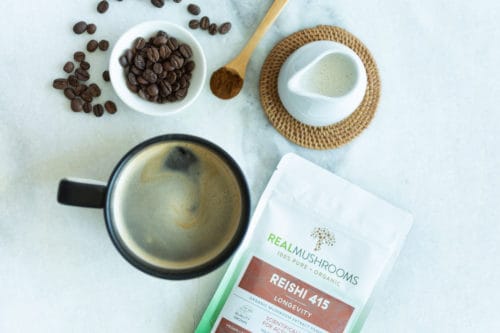
This creamy mushroom-boosted latte features a blend of mushroom extracts that offer a host of benefits, including supporting the immune system and providing a healthy inflammation response.[1] It also includes cacao, which is known to be rich in antioxidants and trace minerals. [2]
Directions: Blend all ingredients until frothy. Serve immediately.
(Original recipe post: www.realmushrooms.com/mushroom-cacao-latte/)

The Tahini Adaptogen Latte has chaga, a powerful antioxidant that grows on birch trees. This mushroom is used to support immune function.[3]
Adaptogens, like many mushrooms, are still being studied; however, they have been used in herbal remedies and are believed to help stabilize physiological processes and promote homeostasis in the body.
Directions: Mix ingredients in a high-speed blender and serve immediately.
(Original recipe post: https://www.realmushrooms.com/tahini-adaptogen-latte/)
 Photo credit: Jordan Bruce
Photo credit: Jordan Bruce
Get your immune system back in gear with this mocha latte featuring chaga mushrooms, a potent antioxidant, offering a nourishing treat that can help get you stronger to stave off those seasonal colds and flu.
Directions: Brew coffee using your preferred method of choice. Add 1/2 of the coffee and all the other ingredients to a coffee mug and blend using an immersion blender or milk frother. Add the rest of the coffee and froth to the top of the drink.
(Original recipe post: https://www.realmushrooms.com/flu-season-mocha/)
Add Something Sweet: If you want something with more sugar than flu season mocha, you can add maple syrup or other sweeteners to your drink.
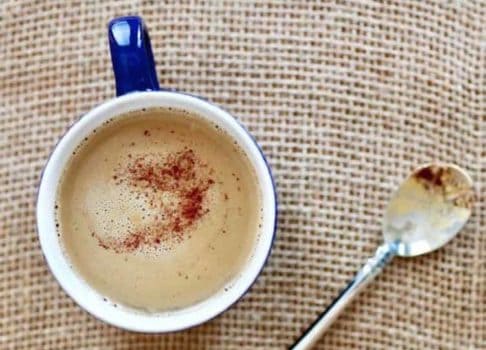
Boost your metabolism and support brain function with this cold brew beverage that features chaga, lion’s mane, and cordyceps.[4]
Directions: Add everything to a blender and blend until desired consistency.
(Original recipe post: www.realmushrooms.com/spiced-mushroom-cold-brew-coffee/)
Rich and silky, cacao butter mushroom coffee contains lion’s mane mushroom extract, which has been shown to help ease the effects of anxiety, depression, and cognitive function.[5]
Directions: Add everything to a blender and blend for roughly 10 to 20 seconds. Serve immediately.
(Original recipe post: www.realmushrooms.com/omg-cacao-butter-mushroom-coffee/)
Upgrade your regular iced coffee by adding 5 Defenders mushroom extract powder for immune strength.
Directions: To make the simple syrup, combine sugar and 1 cup water in a medium saucepan over medium heat, stirring until the sugar has dissolved. Let cool completely and stir in vanilla extract; set aside.
Mix the 5 Defenders Mushroom Extract Powder into coffee, pour coffee over ice with half-and-half and simple syrup, to taste.
(Source: damndelicious.net)

Put a mushroom twist on a coffee trend that’s taking the internet by storm. Dalgona coffee, or whipped coffee, is a creamy treat that’s easy to customize.
Add reishi mushroom extract, which can help support the immune system, improve sleep, and reduce stress and fatigue.[6]
Directions: Combine the instant coffee, sugar, and hot water in a medium bowl. Whip, by hand or with a mixer. Continue mixing until the mixture turns from foamy to frothy to creamy.
Add the Reishi Extract Powder and stir until mixed. Spoon the fluffy blend over milk in a glass filled with ice. (You could also spoon it over warm milk for a hot drink.) Combine and serve.
(Source: nytimes.com)
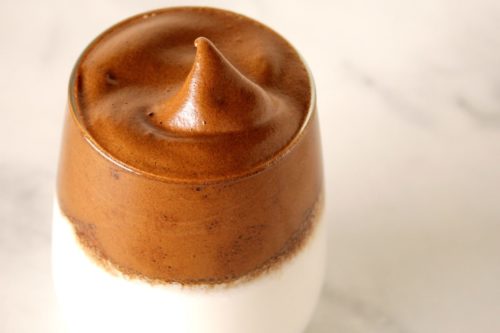
This simple Italian dessert coffee is perfect on warm summer days. Get an extra boost by adding Lion’s mane to enhance cognition.
Directions: Dissolve Lion's Mane Extract Powder into freshly brewed espresso. Place gelato in an old-fashioned glass and pour espresso over top. Serve immediately.
(Source: allrecipes.com)

Creamy and delicious, this coffee includes reishi mushroom powder, which helps support longevity and helps manage physical and emotional stress.[7] It also has chocolate ghee, a clarified butter infused with cacao, which is a twist on the typical "bulletproof" coffee formula.
Directions: Add all ingredients to a high-speed blender and blend on high for 1 - 2 minutes. The longer you blend, the creamier it becomes, and it has a great froth. Pour your freshly brewed coffee and enjoy!
Tip: adding the hemp seeds directly to the blender skips the step of having to make your own milk. They blend super smooth and you don’t have to strain hemp milk, plus added plant protein!
(Source: caitlincuriosity.com)
Coffee Alternative: If you’re not a morning coffee type of person, you can still enjoy the benefits of adding mushroom extract powders to your diet through a cup of hot chocolate. We’ve made it easier for customers to start their days with our Mushroom Hot Chocolate Mix.
Pack a nutritional punch with this mocha featuring chaga which can boost digestion and help to clear skin as well as lion’s mane which supports healthy brain function.[8] [9]
Directions: Mix the Chaga and Lion’s Mane Extract Powder with a very small amount of boiled water (just enough to dissolve them), cool it with some ice, or let it sit and cool. Add all ingredients into a blender and blend on high for a minute.
If you don’t have a blender try mixing your mushroom powder and the rest of your ingredients up in one of those protein drink shakers. Add the ice into your cup and pour in the blended mixture. Feeling decadent? Add some vanilla (plant-based) ice cream.
(Source: rawdealfoods.com.au)
The nutritional benefits of functional mushrooms are diverse and plentiful. It’s important to make sure you’re using organic mushroom extracts that are made from 100% mushrooms with no grain fillers.
Try out these DIY mushroom-infused coffee recipes with Real Mushrooms to enjoy different health benefits every day.
